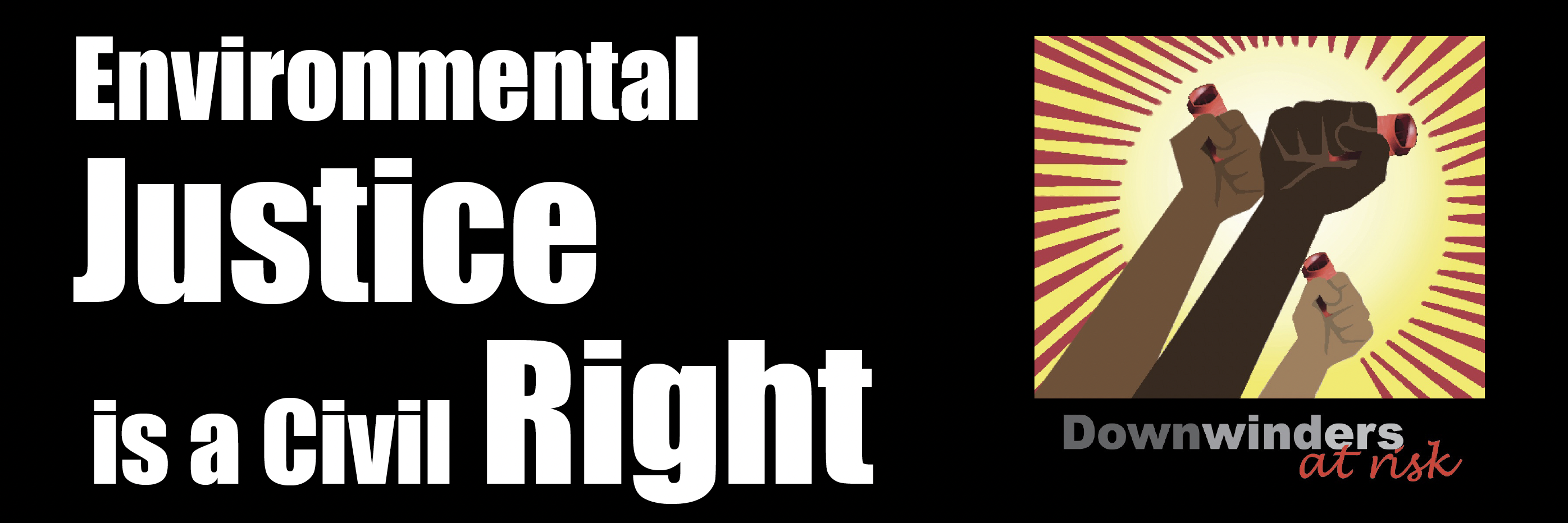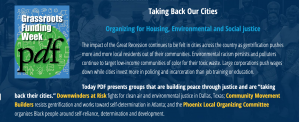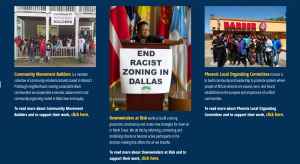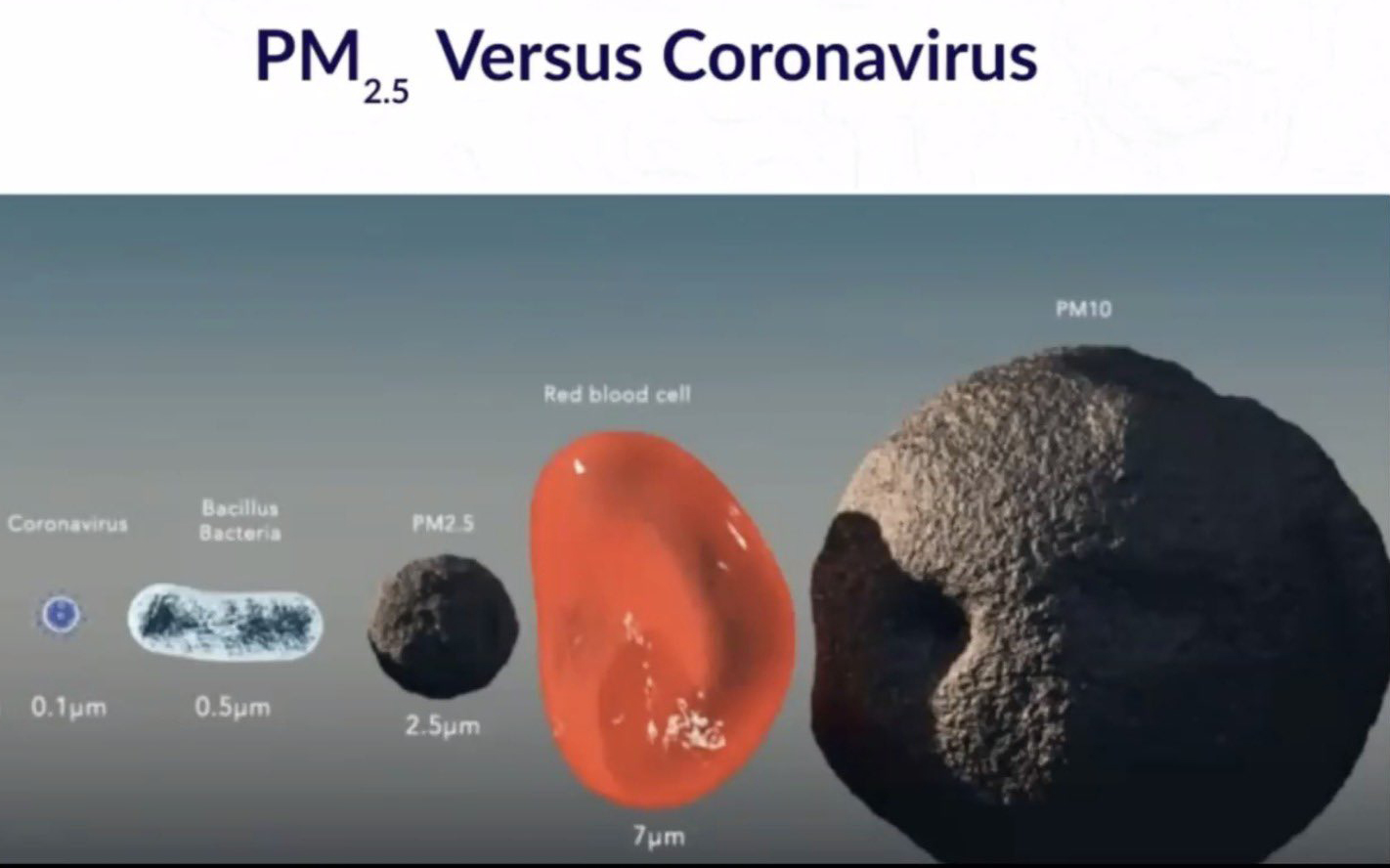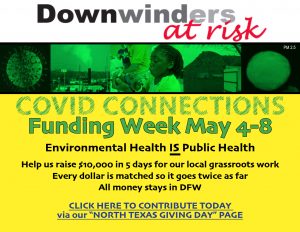Air Quality
A New Era for DFW Air Quality and Downwinders at Risk
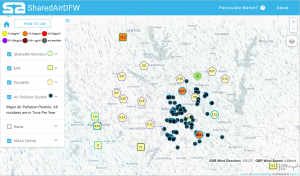
The SharedAirDFW network map displaying monitors from all three monitor networks and major Dallas air polluters identified.
The debut of the SharedAirDFW Network means
21st Century air monitoring finally arrives in North Texas
After three years, and many thousands of hours and dollars, citizens have their own
regional air quality monitoring system.
It’s easy to use, operates in real time, and its monitors are being put where the pollution burdens are greatest.
The Joppa Zion Mothership Monitor: on the Network’s digital map and on its pole after deployment.
Since operation began 8/31, it’s consistently shown higher levels of PM air pollution than other monitors in Dallas.
By January they’ll be 11 more monitors joining it in the Freedman-founded community.
A three-year high-tech collaboration between the University of Texas at Dallas, Downwinders at Risk, the City of Plano, Dallas County, Dallas College, and Paul Quinn College came to fruition today with the official debut of the the SharedAirDFW Network – online, and with an outpost in one of the most polluted neighborhoods in North Texas.
It becomes the first and only regional “hyper-local” air monitoring network in Texas and one of the only ones being built by any US city.
“This network is the purest, most dramatic expression of our 26-year old goal to provide citizens with the tools government won’t,” said Downwinders Director Jim Schermbeck, who’s helped shepherd the Network since it was a National Science Foundation grant runner-up in 2017. “We see SharedAirDFW’s debut as the public health equivalent of turning on electric streetlights for the first time at the turn of the 20th Century. We’re building a utility – the full impact of which won’t be realized for years.”

Dave Dabadeen, Kevin Owen, and Jay Smith – our monitor installation team, deploying one of 11 solar powered satellite monitors in Joppa.
Debuting with eight Particulate Matter (PM) air pollution monitors located from Richardson to Southern Dallas and Mesquite to Fort Worth, the network is scheduled to install over 100 more in the next 12-24 months, including blanketing Dallas neighborhoods whose residents say they’re already breathing bad air but have no way to prove it.
In the last decade published research on the human health effects of exposure to Particulate Matter air pollution has linked it to a variety of illnesses and diseases, including developmental impacts such as Autism, Parkinson’s, Dementia, and IQ loss. These effects have been documented at exposure levels well below U.S. EPA regulatory limits.
All the monitors in the network were built at the Physics Laboratory at the University of Texas at Dallas campus in Richardson. They’re being distributed to members either in clusters of 11, with one larger hard-wired “Mothership” accompanying ten smaller solar-powered ones or the Mothership as its own stand alone unit.
ALL DFW PM MONITORS DISPLAYED ON A SINGLE MAP
PM Air pollution data collected from those monitors, along with information from EPA and DFW Purple Air monitors, are displayed in real time on a digital map accessible to anyone online at www.sharedairdfw.com. For the first time, a single website displays all the online monitors networks collecting PM air pollution data in North Texas on the same map. Besides UTD, Downwinders at Risk, Dallas College, and Dallas County will be displaying the SharedairDFW map on their own websites.
Only Particulate Matter air pollution levels are shown by the SharedAirDFW map now but larger monitors will also be capturing Ozone, or Smog levels. At some point in the near future, that data will also begin to be displayed on the Network map.
MAPPING OF MAJOR POLLUTERS
Also on display are the locations of the major air polluters in the City of Dallas, along with their self-reported pollution volumes – a first-ever inventory of Big D’s air polluters that no level of government currently provides.
MANY MORE M ONITORS IN MANY MORE PLACES
ONITORS IN MANY MORE PLACES
Currently there are only six EPA monitors for Particulate Matter Air pollution in all of North Texas, and only 12 Purple Air monitors online. With the ability to saturate neighborhoods with almost a dozen monitors apiece, SharedAirDFW allows residents, researchers, and policymakers to better pinpoint pollution plumes and health risks.
REAL TIME DATA
For the first time there’s a way for DFW residents get air quality information in real time instead of waiting for up to two or three hours at government monitor sites. The SharedAirDFW monitors display their readings every 30 seconds, 24 hours a day.
AN EMPHASIS ON ENVIRONMENTAL JUSTICE
For the first time there’s year-round, calibrated air quality data being collected in Dallas’ most polluted neighborhood – the Joppa community in Southern Dallas along the Trinity River. The “Joppa Zion Mothership” – named for the adjacent Church – began transmitting on Monday August 31st. It’s linked to two additional “satellite” monitors that began transmitting this last weekend. By January they’ll be 11 monitors in Joppa, making it the most densely monitored neighborhood not just in Dallas, but all of Texas.
Joppa’s monitors are the first of 33 air monitors Downwinders at Rik is deploying in so-called “fence line” locations. After installation in Joppa is completed, another 11 will be installed in West Dallas, and then in and around Midlothian as well.
In the two weeks since the first Joppa monitor was installed, it’s consistently recorded higher levels of PM pollution than other monitors in the SharedAirDFW network as well as local EPA and Purple Air monitors. Schermbeck said those results vindicate the decision to locate monitors in predominantly Black and Brown neighborhoods disproportionately burdened by their proximity to industrial polluters. “Our monitors are going where people are most harmed by air pollution, but least able to do something about it.”
National Fund Spotlights Downwinders’ Efforts to “Take Back Our Cities”
Today, the Peace Development Fund is using its national presence and contacts to help raise funding for Downwinders at Risk, under the banner of “Taking Back our Cities.”
We’re being featured on their website all day. We’re one of only 13 groups chosen to receive this kind of attention from the Fund.
The Fund liked our work around the upcoming Dallas MasterPlan process, partnering with Southern Sector rising and neighborhood groups to rezone Southern Dallas communities tract-by-tract to improve environmental health.
We’re one of the few environmental groups in the country using land use planning tools to reduce residents’ exposure to pollution. Our aim is to dismantle the racism institutionalized in local zoning codes that have forced People of Color and industry to live side-by-side for decades.
Many of you helped us reach our Giving Day goal. But we need those of you who didn’t contribute on Giving Day to do your part today. Here’s your chance to join the fight for cleaner air and environmental justice.
Thanks.

Director

____________________________________
COVID Connects:
Racist Zoning
to
Increased Vulnerability to COVID
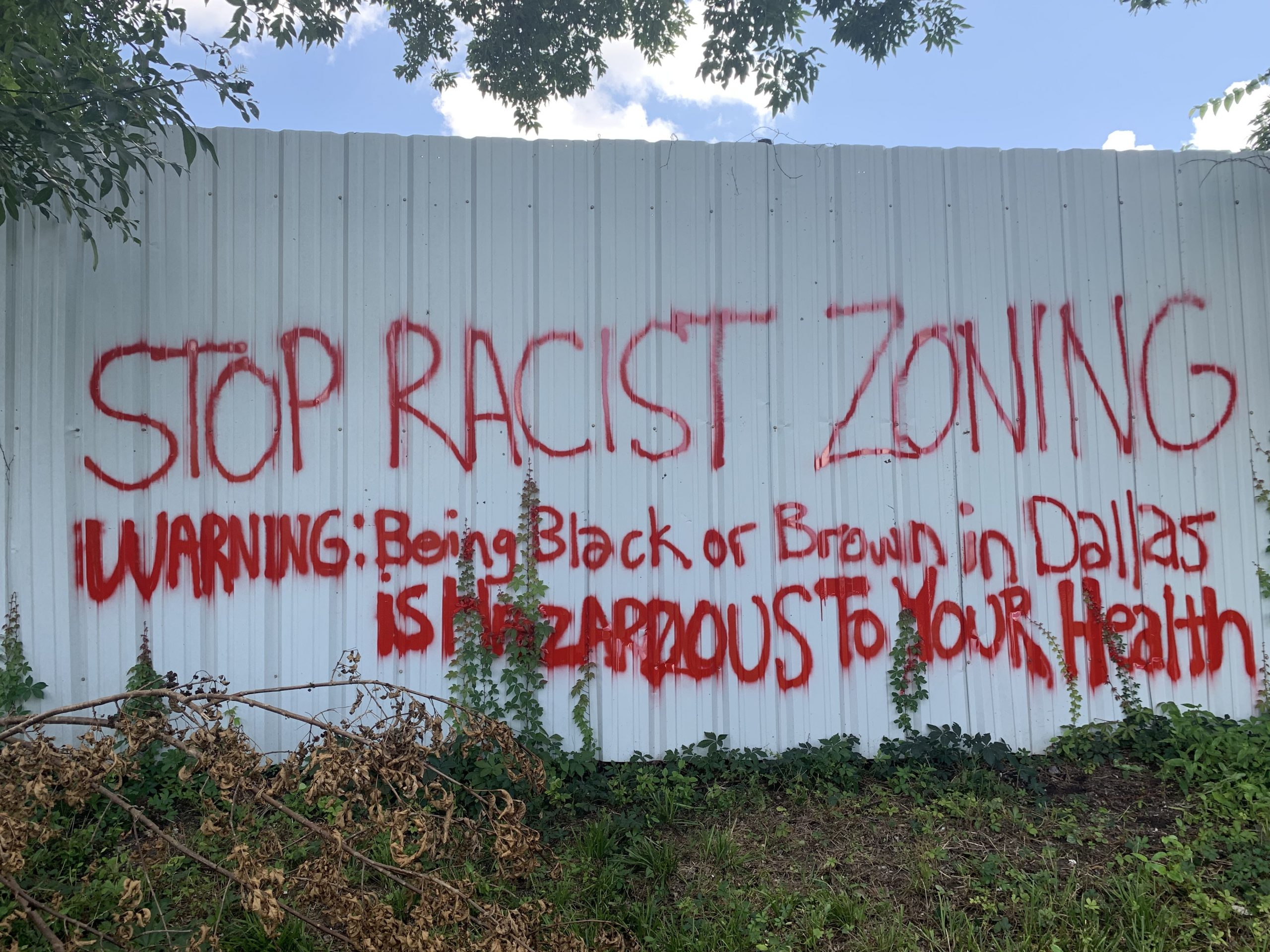
What is It?
For most people, “zoning” isn’t a very interesting topic. How your property is classified by city government is of little concern – until you discover how few protections you have or how close a large polluter can operate near you.
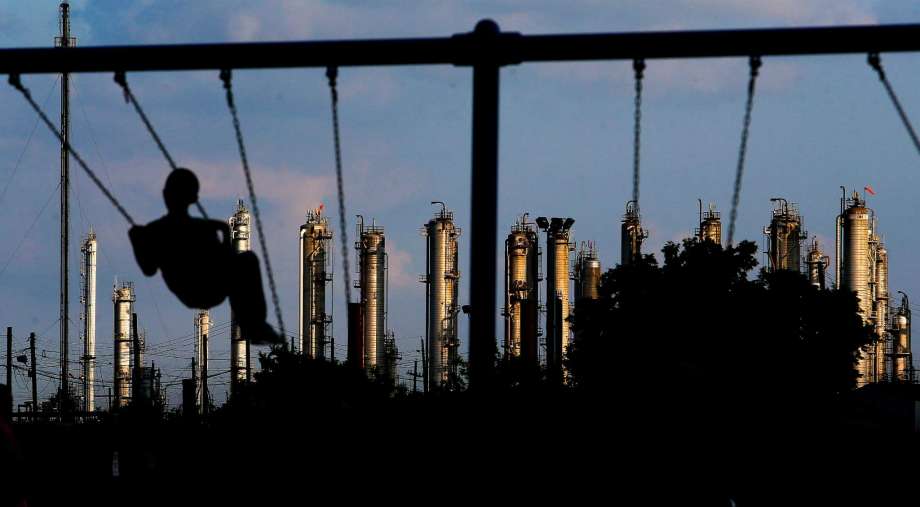 In Dallas as well as most American cities, People of Color have been historically forced by law or practice to live in neighborhoods they had to share with industry. The Trinity River floodplains were used as a large dumping ground for both people and factories deemed “undesirable” by white power brokers.
In Dallas as well as most American cities, People of Color have been historically forced by law or practice to live in neighborhoods they had to share with industry. The Trinity River floodplains were used as a large dumping ground for both people and factories deemed “undesirable” by white power brokers.
While illegal now, that institutionalized discrimination lives on in the form of obsolete racist zoning that still makes Southern Dallas a dumping ground.
Why Do It?
Unless you change the zoning classifications in South Dallas that make it such a haven for dirty industry, the City’s pollution burden will remain concentrated there, stifling economic development and quality of life.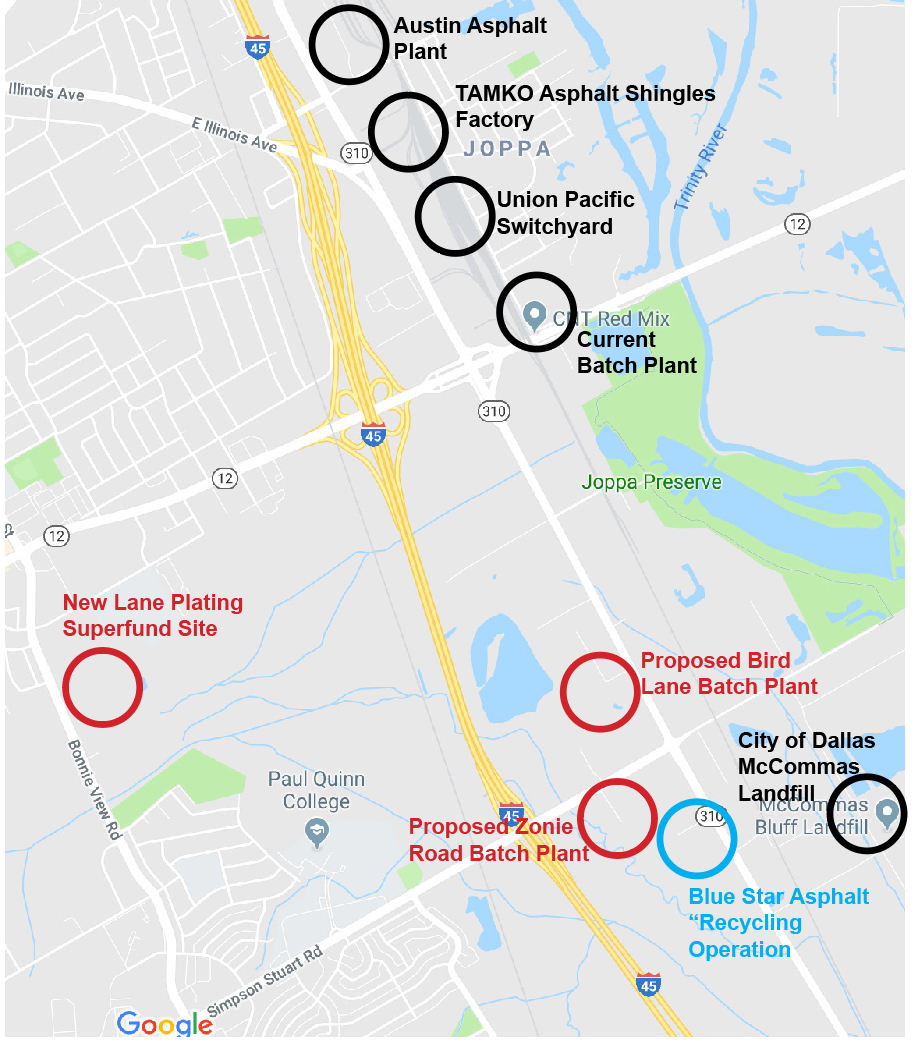 During the last two years Southern Dallas has fought off four proposed batch plants in the same neighborhood because the zoning directs them there. The notorious Shingle Mountain illegal dump took advantage of zoning loopholes to withhold notification of its activities from its neighbors. Instead of playing “whack-a-mole” and having to organize anew against every attempt to site a new polluter there, Southern Dallas residents need to re-write the leftover racist zoning laws and prohibit their part of town from becoming the default Big D dumping ground.
During the last two years Southern Dallas has fought off four proposed batch plants in the same neighborhood because the zoning directs them there. The notorious Shingle Mountain illegal dump took advantage of zoning loopholes to withhold notification of its activities from its neighbors. Instead of playing “whack-a-mole” and having to organize anew against every attempt to site a new polluter there, Southern Dallas residents need to re-write the leftover racist zoning laws and prohibit their part of town from becoming the default Big D dumping ground.
Downwinders is partnering with our friends at Southern Sector Rising and the Inclusive Communities Project to do just that. Dallas is gearing up for a once-in-a-decade review of the City’s MasterPlan that will invite residents to imagine how they want to change their neighborhoods. There’s an opportunity to submit new plans that reverse the racist zoning that plagues the entire Southern part of Dallas.
We’re working with specific Southern Dallas neighborhoods that want to give residents more green space, more buffer zones between themselves and pollution, and even begin proceedings to remove industry from their communities. It’s a 2-3 year process but the end result is increased Environmental Justice in places that desperately need it.
What’s the COVID
Connection?
Bottom: COVID Risk Factors
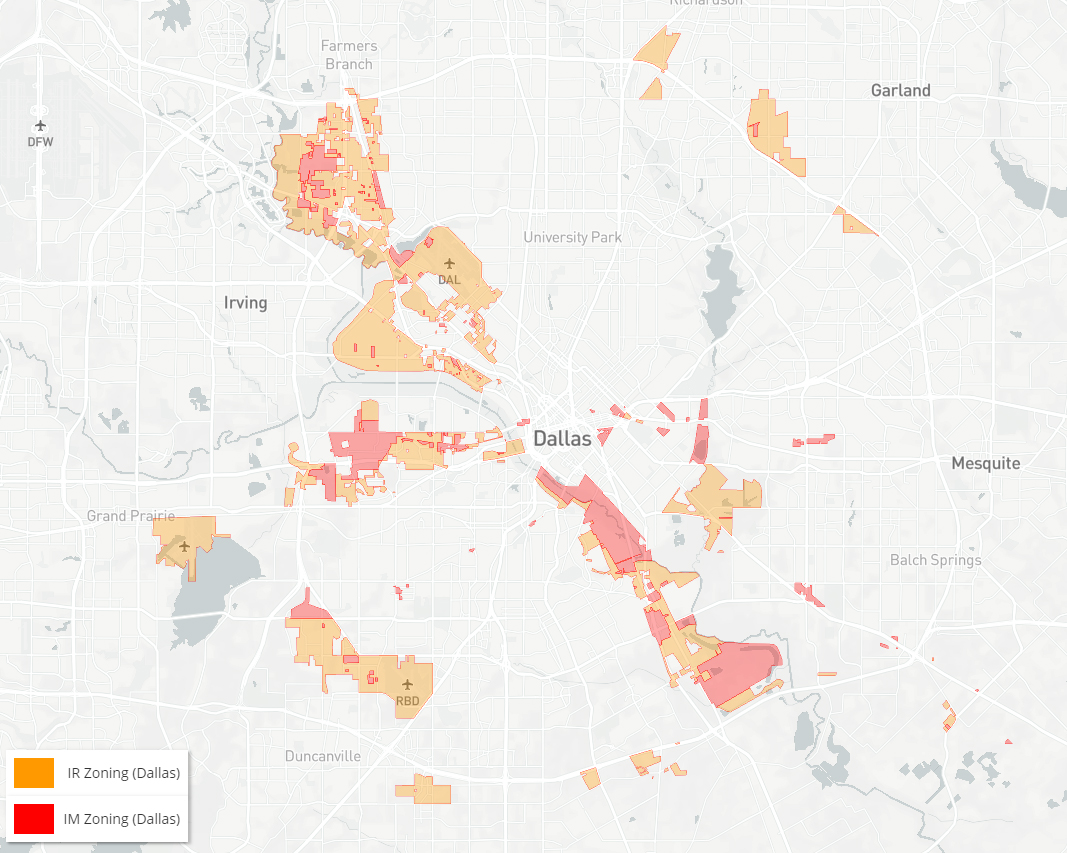 Research done during this pandemic shows Black and Brown residents are being disproportionatey impacted by the COVIC virus.This is being attributed to a number of “pre-existing conditions” in the neighborhoods where they live, including lack of health insurance and health care facilities, poverty and…exposure to air pollution. We know that Black and Brown residents are more likely to be exposed to more and higher levels of air pollution than their white peers.
Research done during this pandemic shows Black and Brown residents are being disproportionatey impacted by the COVIC virus.This is being attributed to a number of “pre-existing conditions” in the neighborhoods where they live, including lack of health insurance and health care facilities, poverty and…exposure to air pollution. We know that Black and Brown residents are more likely to be exposed to more and higher levels of air pollution than their white peers.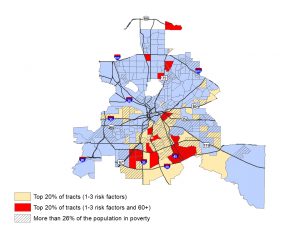 If you change the zoning so that Southern Dallas residents are not living side-by-side with polluters, you reduce their exposure to poisons and improve public health, including making them less vulnerable to viruses like COVID.
If you change the zoning so that Southern Dallas residents are not living side-by-side with polluters, you reduce their exposure to poisons and improve public health, including making them less vulnerable to viruses like COVID.
STATUS?
“forwardDallas!” is the name of the process the City of Dallas is using to redraw its MasterPlan. It was supposed to begin this Spring but may not start until summer. It will involve lots and lots of neighborhood meetings.Downwinders, Southern Sector Rising and the Inclusive 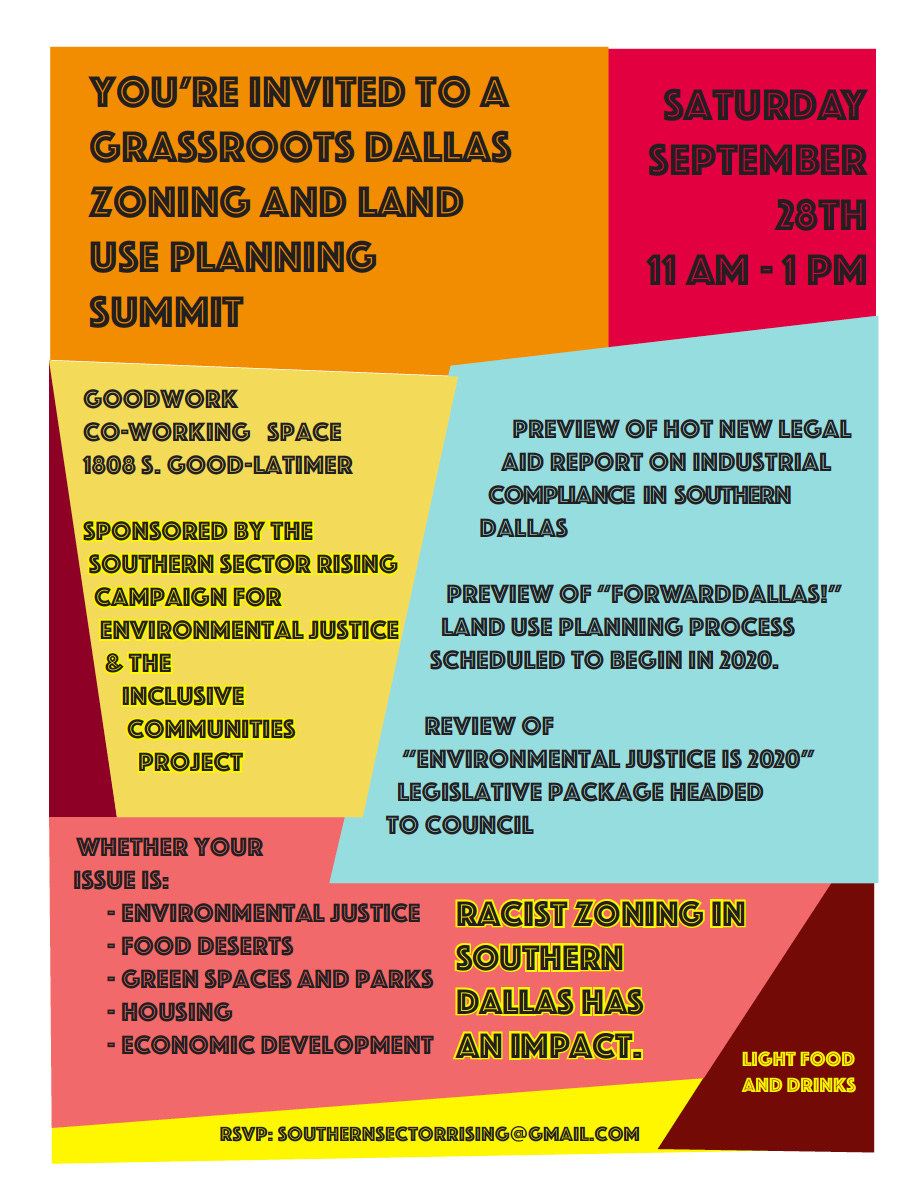 Communities Project isn’t waiting however. We’ve already met with residents’ groups in the Floral Farms and Fruitdale neighborhoods to begin a grassroots planning process. Because of their preparation, these groups will be able to show up to the City meetings with their own plans already developed and ready to be approved. More online meetings are being scheduled for other neighborhoods.
Communities Project isn’t waiting however. We’ve already met with residents’ groups in the Floral Farms and Fruitdale neighborhoods to begin a grassroots planning process. Because of their preparation, these groups will be able to show up to the City meetings with their own plans already developed and ready to be approved. More online meetings are being scheduled for other neighborhoods.
No group has used the “forwardDallas” process to overhaul Dallas zoning in such a comprehensive way. No coordinated effort has ever been focused on this mission. Like so many projects Downwinders takes on, its a “first.” But it’s a chance to make fundamental Change.
This obsolete pattern of “redlining” and segregation lives on in a legacy of racist zoning that still drives polluters to Southern Dallas and along the Trinity River Corridor. Most of the land set aside for heavy industry in Dallas is still south of the River – in predominantly Black and Brown neighborhoods like West Dallas and Joppa.
To make sure Southern Dallas doesn’t remain the City’s dumping ground you have to change the zoning that controls what can go where and next to whom.
PM Pollution and COVID
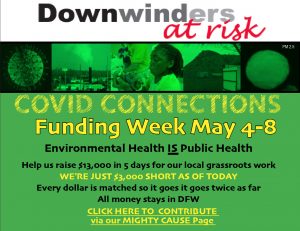
The Massachusetts-based Peace Development Fund has chosen to spotlight the COVID-connected work of
Downwinders at Risk and 12 other groups
across the country this week in order to help raise funds for that work.
As of late last night successfully met our original goal of $10,000. THANK YOU. So now we’re setting our sights on trying to raise an additional $3,000 by Friday. All of this money goes to local DFW program work in front line communities that are most vulnerable to
COVID infection.
Help us help more people.
CONTRIBUTE HERE
Thanks
______________________________________
COVID Connects:
Particulate Matter Air Pollution
to Increased Risk of Disease
What is It?
You’ve heard of the dangers of second-hand smoke? PM is industrial second-hand smoke.
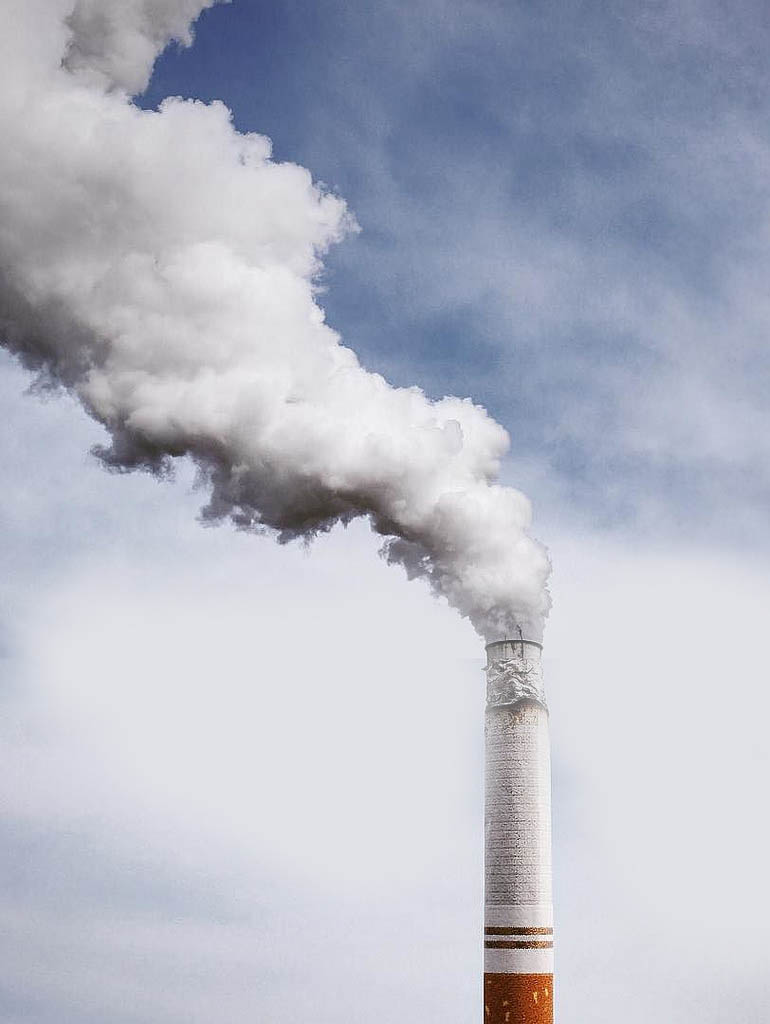 Research over the last decade connects PM pollution with not just lung and coronary diseases, but IQ loss, Autism, Dementia, Parkinson’s Disease, Diabetes, Immune-Deficiency, depression, and blindness. Research also shows Black and Brown residents are exposed to more PM pollution and at higher levels than most of their white peers.
Research over the last decade connects PM pollution with not just lung and coronary diseases, but IQ loss, Autism, Dementia, Parkinson’s Disease, Diabetes, Immune-Deficiency, depression, and blindness. Research also shows Black and Brown residents are exposed to more PM pollution and at higher levels than most of their white peers.re-thinking freeways. We’re in the weeds with neighborhood groups plotting new land use plans separating PM sources from people, or eliminating them altogether. In essence, we’re conducting an anti-smoking campaign aimed at machines.
Why Do It?
Sources of PM pollution are controlled by local gov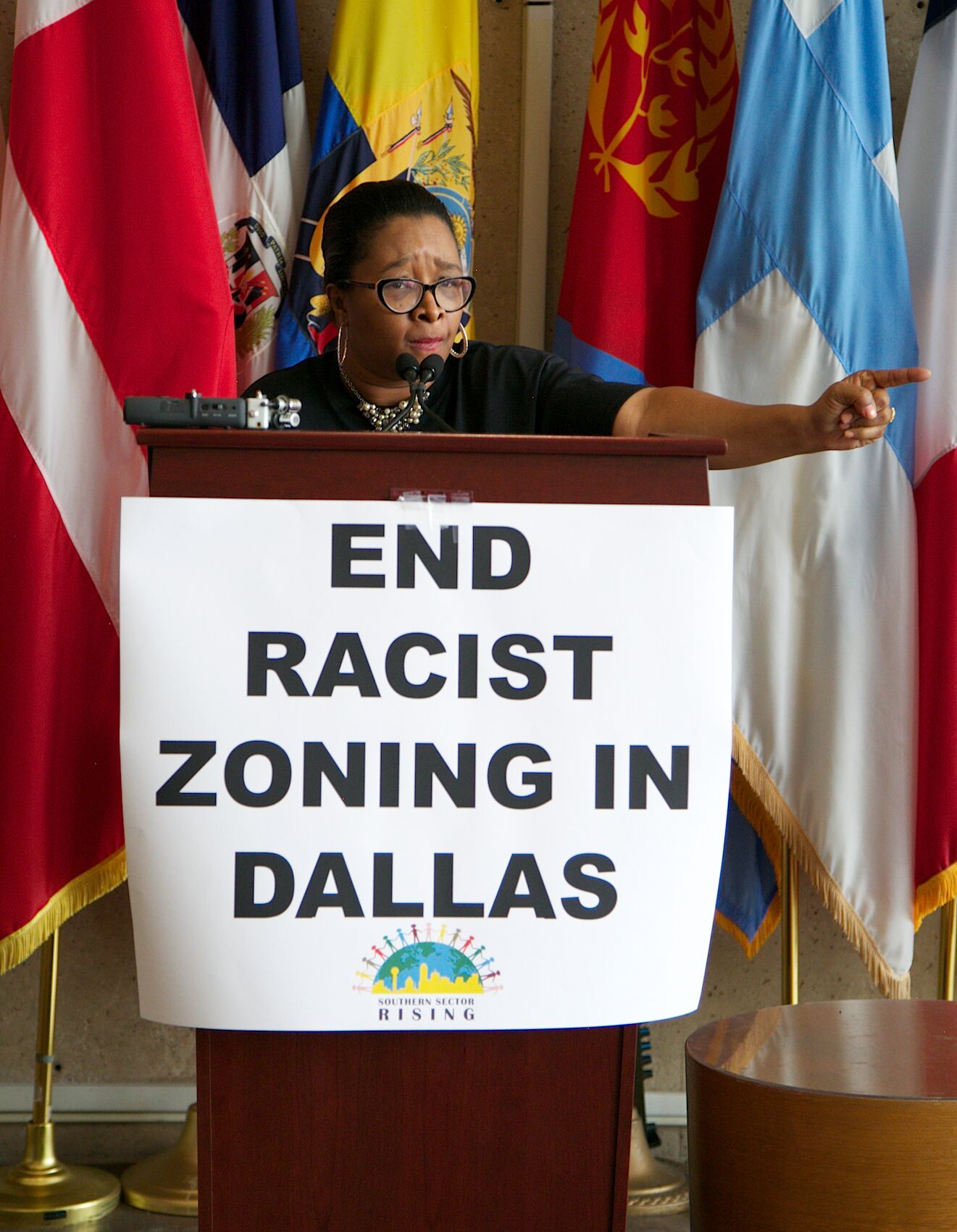 ernments through zoning and other municipal and county policies. As a local group, North Texas is where Downwinders is most effective in making change.
ernments through zoning and other municipal and county policies. As a local group, North Texas is where Downwinders is most effective in making change.
After the 2016 presidential election it was clear we couldn’t make progress on DFW chronic smog without good faith partners at EPA. So we turned our attention to addressing the most insidious air pollutant that can be controlled by local action. We found we could have a big impact on how these very small toxic particles are affecting DFW residents.
What’s the COVID Connection?
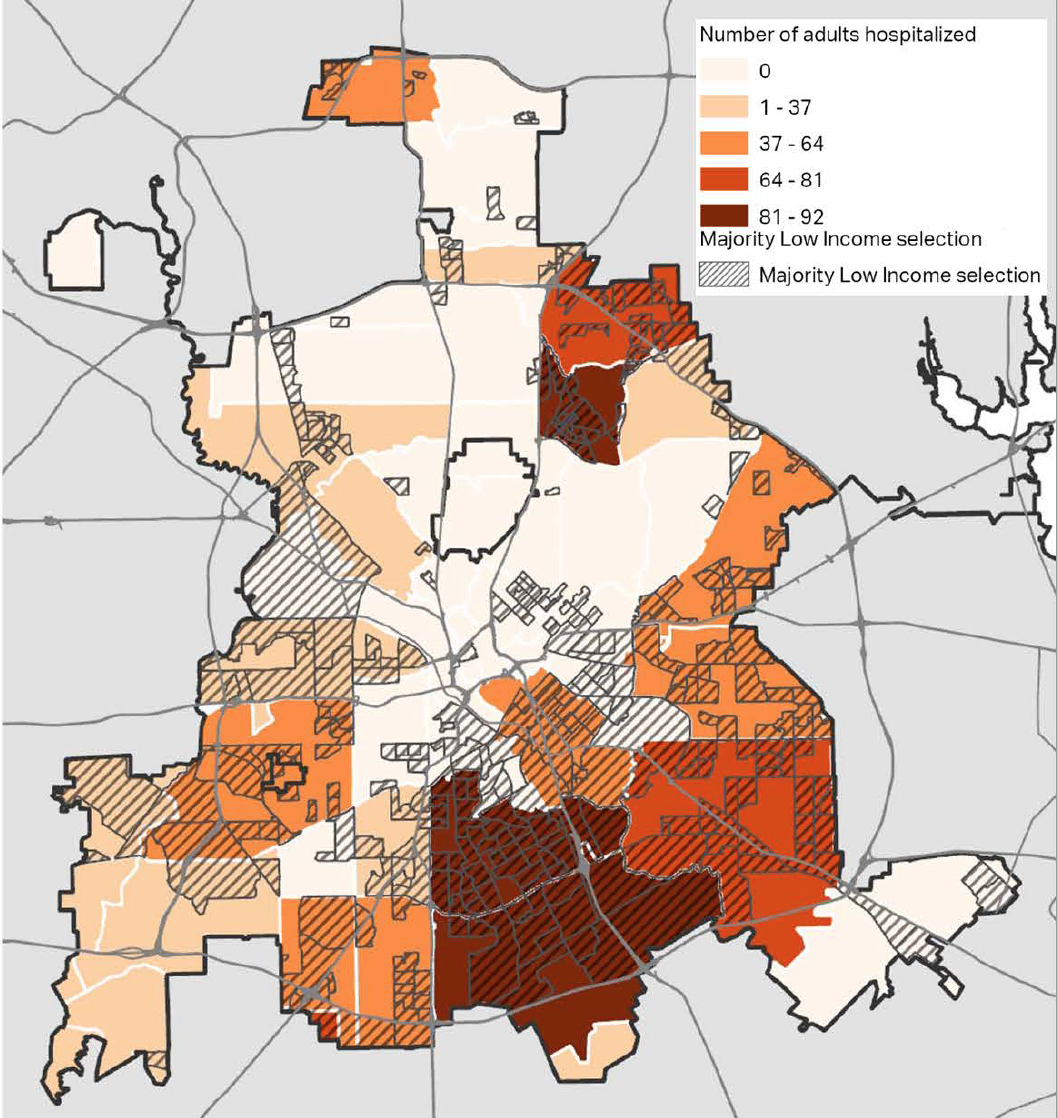
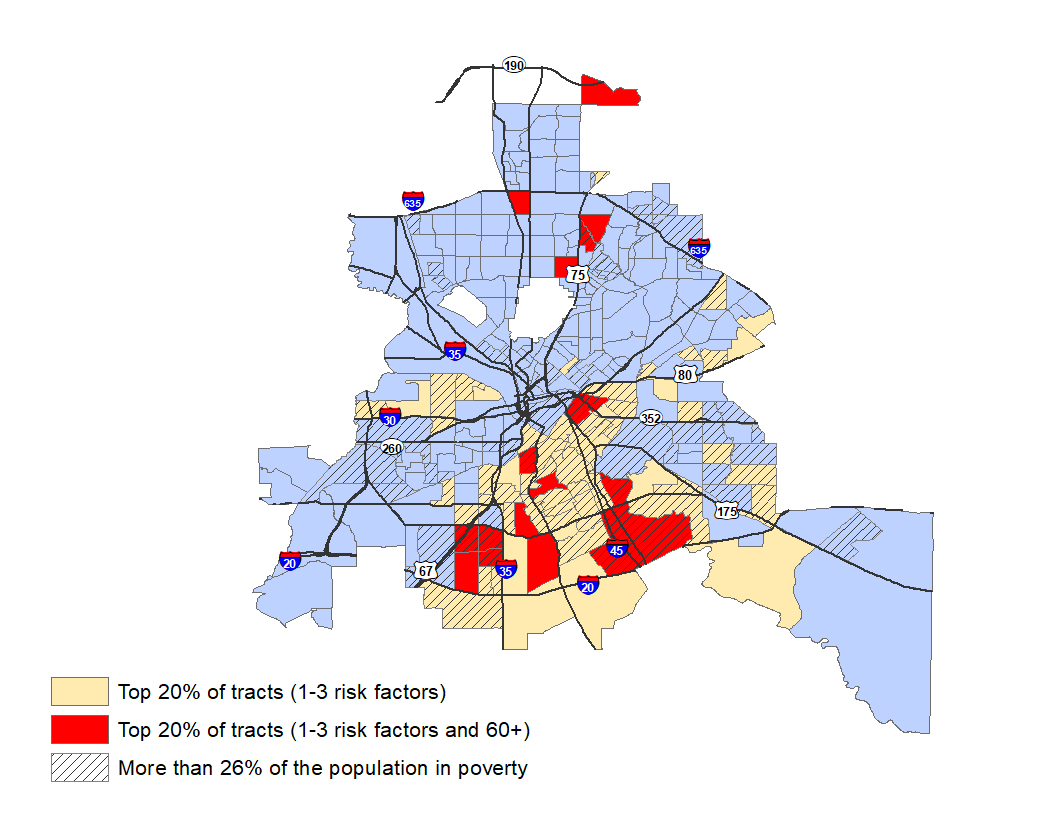
STATUS?
Since 2017 Downwinders has purchased five portable Aeroqual PM 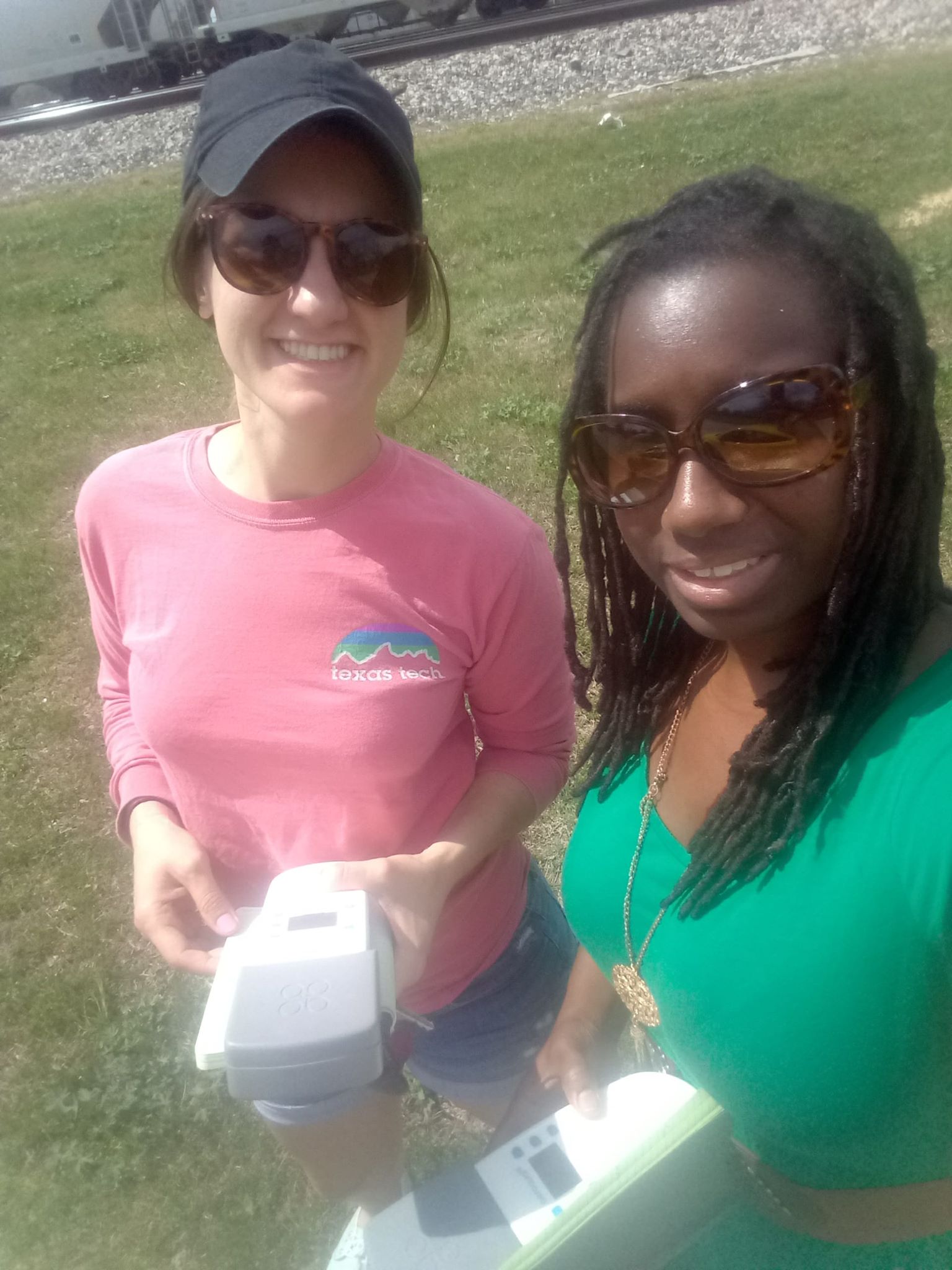 monitors that have been used to track PM Air pollution in DFW and identify hot spots. These portable monitors were the first to record PM levels in the Joppa community in Dallas and the Shingle Mountain illegal dump. We also offer free training in how to use these monitors.With UTD and others, Downwinders is building a 100 + PM monitor network for DFW to track the pollutant in real time across the region.
monitors that have been used to track PM Air pollution in DFW and identify hot spots. These portable monitors were the first to record PM levels in the Joppa community in Dallas and the Shingle Mountain illegal dump. We also offer free training in how to use these monitors.With UTD and others, Downwinders is building a 100 + PM monitor network for DFW to track the pollutant in real time across the region.
Dallas’ climate plan sets goals for electrification of the DART bus fleet by 2040 but other cities are moving faster.
For the last three years debate over the siting of proposed new batch plants has raised the profile of Particulate Matter at Dallas City Hall and around North Texas.
Environmental Organizing on Giving Day 2020
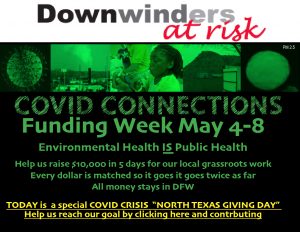
TUESDAY GIVING DAY UPDATE:
We’re over half-way to our goal of $10,000.
Please help us get there today.
1. Today the Communities Foundation of Texas is sponsoring a special COVID crisis North Texas Giving Day for DFW non-profits.
2. The Peace Development Fund has chosen to spotlight the COVID-connected work of Downwinders and 12 other groups across the country to help during the crisis.
The Fund and generous donors are matching every dollar we raise this week up to $10,000 – that’s a $20,00,000 grant on the line.
We have until Friday to raise the $10,000.
You can help us reach this goal right now by contributing at our North Texas Giving Day Page or the Mighty Cause pay portal the Development Fund has set up for us.
Thanks for your support,


Evelyn Mayo, Chair
____________________________________
COVID Connects:
Community Organizing to
Environmental Health
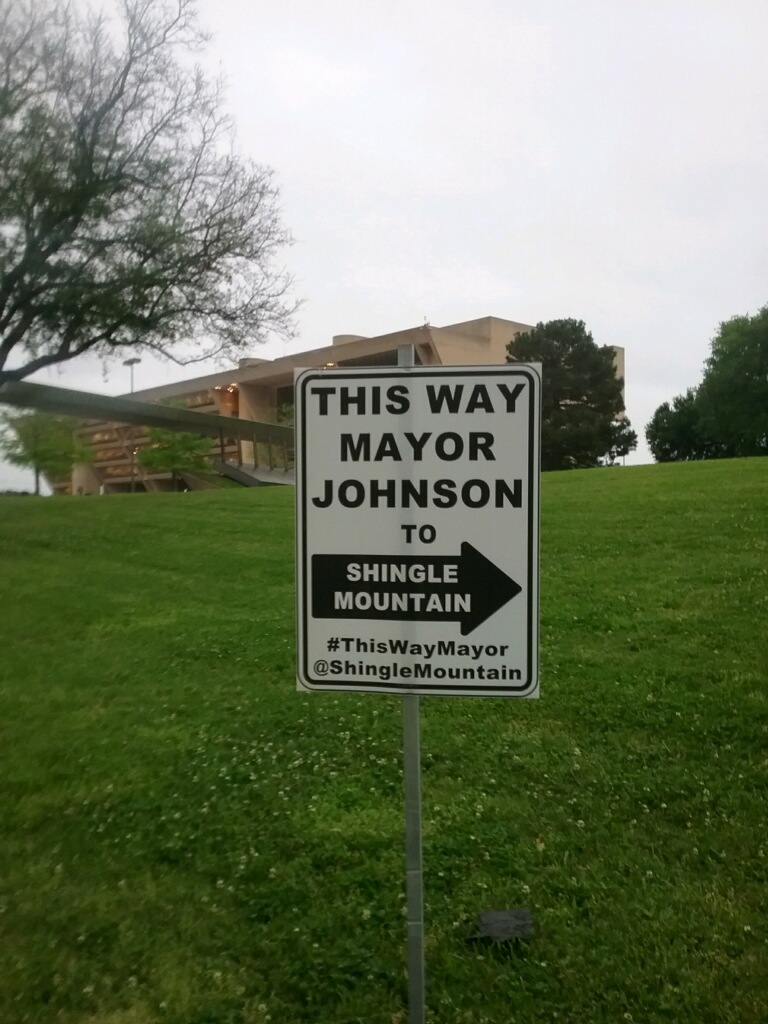 200 signs like these went up across Dallas on Earth Day 2020. Major Johnson has yet to visit or speak publicly about the highest profile environmental justice scandal since the West Dallas RSR lead smelter Superfund site 25 years ago.
200 signs like these went up across Dallas on Earth Day 2020. Major Johnson has yet to visit or speak publicly about the highest profile environmental justice scandal since the West Dallas RSR lead smelter Superfund site 25 years ago.
What is It?
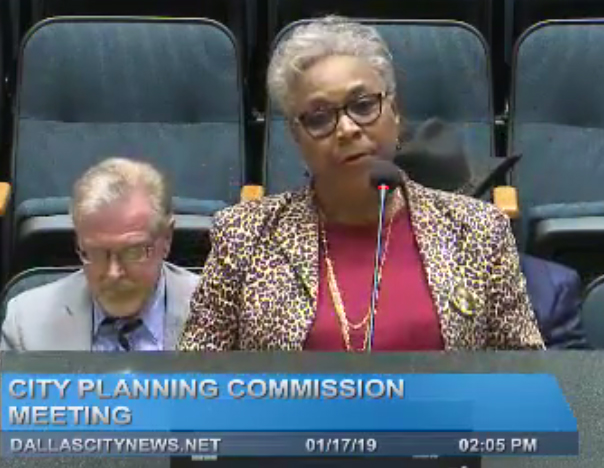 Downwinders provides much needed basic organizing resources to local grassroots environmental health fights.We offer the only full time staff devoted to applying community organizing principles to assist groups. We provide start-up funding for fliers and other materials. We’re the only citizens group that has the technology to take air pollution samples…and the classes to teach you how to do it as well. Mostly, we give those in need the attention they’re not getting from officials or anyone else.
Downwinders provides much needed basic organizing resources to local grassroots environmental health fights.We offer the only full time staff devoted to applying community organizing principles to assist groups. We provide start-up funding for fliers and other materials. We’re the only citizens group that has the technology to take air pollution samples…and the classes to teach you how to do it as well. Mostly, we give those in need the attention they’re not getting from officials or anyone else.
Most importantly, we show how to use a fight to change the system that produced the problem. The most recent example is the Shingle Mountain illegal dump and the group Southern Sector Rising that was created to shut it down and clean it up.
Why Do It?
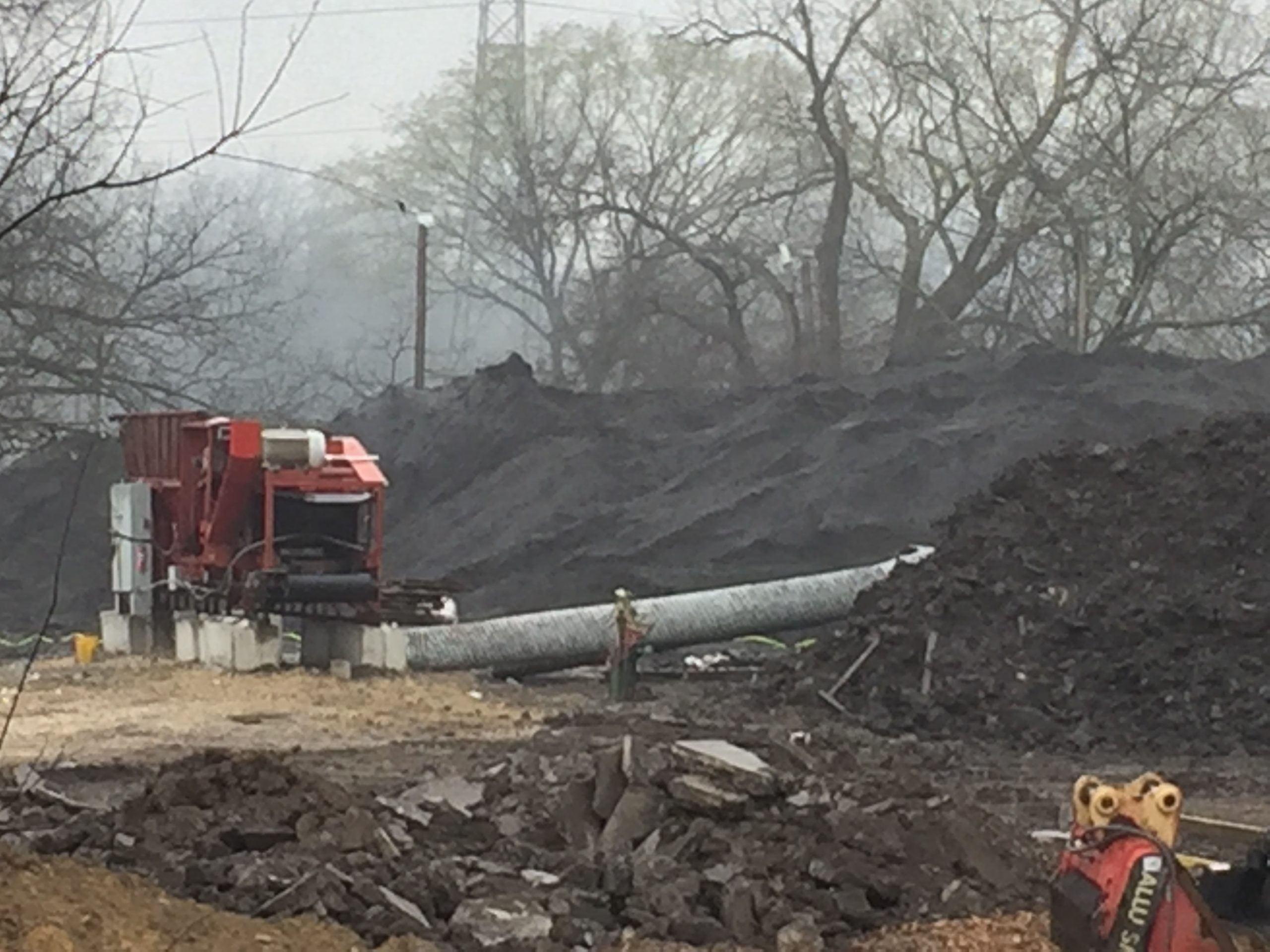 Shingle Mountain for almost a year when she finally found Downwinders. It took us only three months of organizing with Ms. Jackson to get the City to reverse itself and file suit against the site’s operators to close the site.Out of that effort sprang Southern Sector Rising, a group aimed at not only seeking justice for Shingle Mountain residents but making sure Dallas implemented a citywide Environmental Justice agenda. Part of that agenda, announced on March 20th 2019 at a City Hall news conference, was the restoration of the Dallas Environmental Health Commission and a Environmental Equity Provision that would steer polluters away from already over-polluted neighborhoods.
Shingle Mountain for almost a year when she finally found Downwinders. It took us only three months of organizing with Ms. Jackson to get the City to reverse itself and file suit against the site’s operators to close the site.Out of that effort sprang Southern Sector Rising, a group aimed at not only seeking justice for Shingle Mountain residents but making sure Dallas implemented a citywide Environmental Justice agenda. Part of that agenda, announced on March 20th 2019 at a City Hall news conference, was the restoration of the Dallas Environmental Health Commission and a Environmental Equity Provision that would steer polluters away from already over-polluted neighborhoods.
Southern Sector Rising and Downwinders are using the example of Shingle Mountain to pass policies aimed at preventing new Shingle Mountains.
What’s the COVID Connection?
In 2020 it seems obvious that municipal governments need to address environmental health issues. But Dallas ditched it’s original Environmental Health Commission a decade ago.
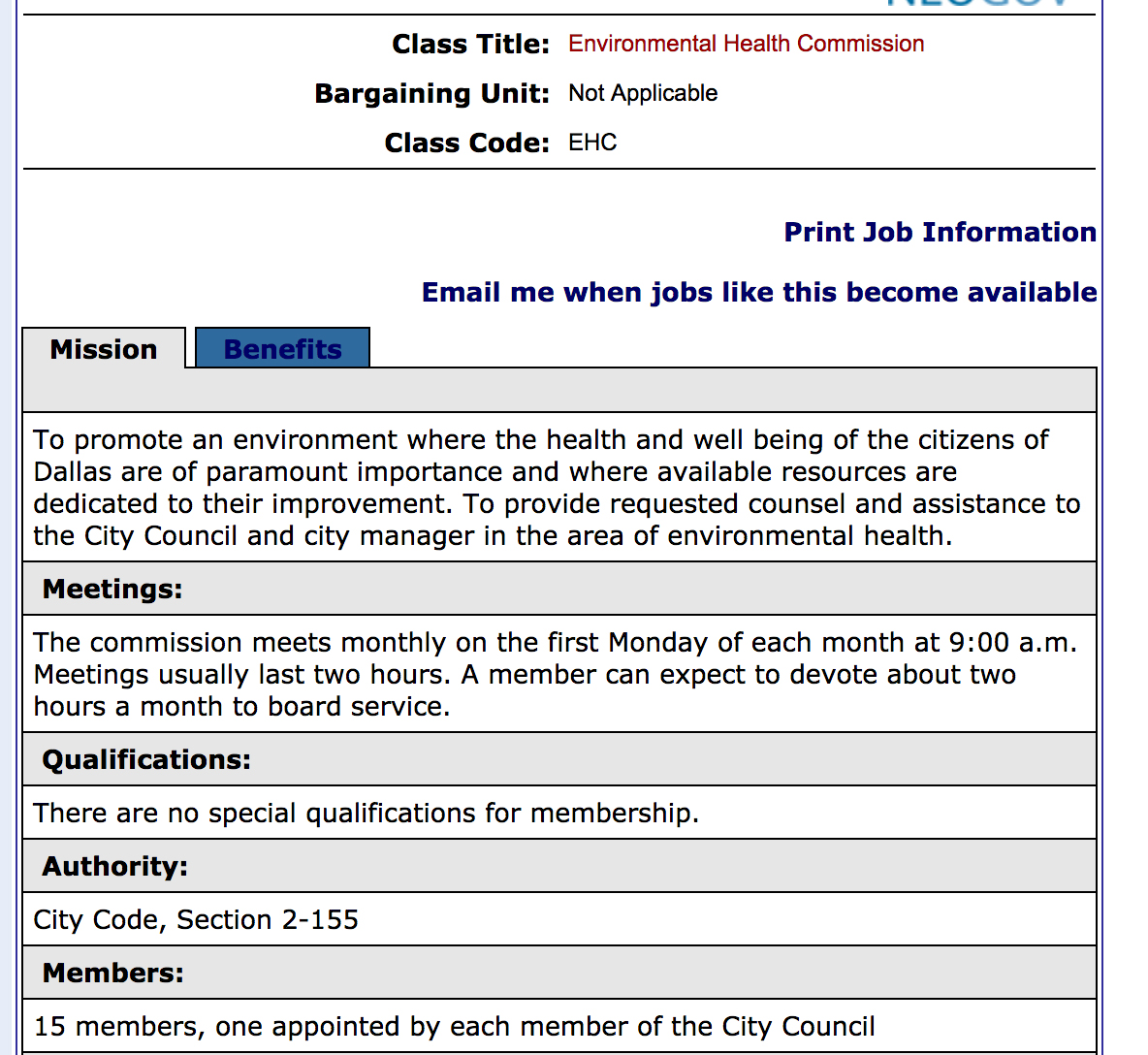 Formed in the wake of the 1980’s West Dallas and East Oak Cliff Lead smelter fights, the Health Commission was a citizen-based watchdog. It recommended the effective banning of hazardous and medical waste incineration in the City and wrote a tough anti-smoking policy before the Council disbanded it.
Formed in the wake of the 1980’s West Dallas and East Oak Cliff Lead smelter fights, the Health Commission was a citizen-based watchdog. It recommended the effective banning of hazardous and medical waste incineration in the City and wrote a tough anti-smoking policy before the Council disbanded it.
Had the Commission been around in 2017, it’s likely the Shingle Mountain dump would have shown-up on Dallas City Hall’s radar screens a lot sooner than it did when a reporter had to tell officials about the outrage a year later.
And an “equitable” economic development policy would end the practice of illegal dumpers and grifters targeting Southern Dallas for their schemes. That pattern of “development” is one reason why residents find themselves more vulnerable to COVID.
Before the virus, City Hall policy avoided environmental health issues. This pandemic shows why it must embrace and plan for them.
STATUS?
Southern Sector Rising has asked that restoration of the Dallas Environmental Health Commission be part of the City’s new climate plan, up for a vote on May 27th. Despite 10 of the current 15 Dallas City Council members having endorsed the idea only last Spring, there’s been no public movement toward adoption. 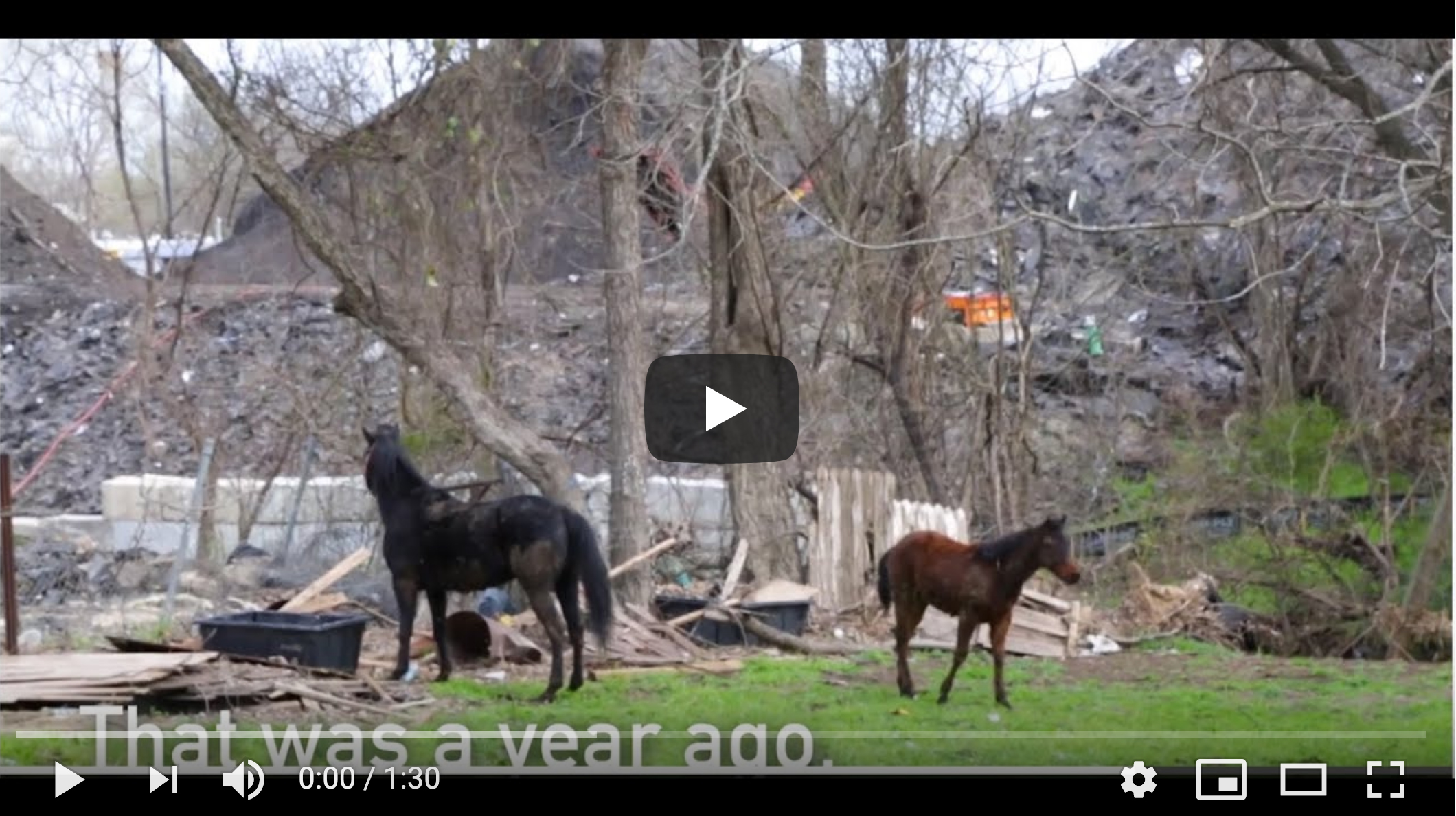
SSR won the closing of Shingle Mountain as an active operation, but the dump itself remains an on-going public health crisis in its own right. Over 100,000 tons of petroleum based asphalt shingles
are stacked 6-7 stories high next door to Dallas residents, including families with children.
Despite being invited and holding office for a year, Dallas Mayor Eric Johnson has never visited or commented publicly on Shingle Mountain.
over 200 “directional aids” went up around
ACTION YOU CAN TAKE:
Here’s a link to a quick “ClickNSend” letter you can send Dallas Mayor Eric Johnson to help him find his way to Shingle Mountain
COVID CONNECTIONS
Downwinders At Risk was already dedicated to fighting for environmental health in North Texas before the COVID virus hit.
Focusing on harmful Particulate Matter, we were already supporting grassroots efforts to reduce the air pollution burdens in predominantly Black and Brown neighborhoods.
We were already building out local capacity to monitor DFW air pollution and advocating an increased role for local cities and counties to protect their residents from environmental health threats.
All of that work was important before March. It’s become more important since then. But our responsibilities on the ground are outstripping our ability to support them adequately. Like other non-profits, the virus has made it harder to do even the simple things.
This week you can help provide some relief.
The Peace Development Fund has chosen to spotlight the COVID-connected work Downwinders is doing, along with that of 12 other grassroots groups across the country to help supplement their budgets during the crisis. The Fund and generous donors are matching every dollar we raise this week up to $10,000 – that’s a $20,00,000 grant on the line.
We have until Friday to raise the $10,000.
Beginning today and continuing thru Tuesday the 5th at Midnight you can help us meet this goal by contributing via our North Texas Giving Day Page.
Then Wednesday thru Friday the Development Fund has its own Downwinders Mighty Cause pay portal you can also use.
We’re using each day this week to show how our various pieces of program work is more relevant than ever before. Today it’s an update on our ambitious new DFW air monitoring network – SHAREDAIRSDFW.
We know everyone is having a hard time, but with the Development Fund matching your dollars, you can make whatever contribution you give go twice as far to benefit those at highest risk.
Thanks for your support,


Evelyn Mayo, Chair
COVID Connects:
Vulnerable Communities to the Need
for Better Air Pollution Monitoring
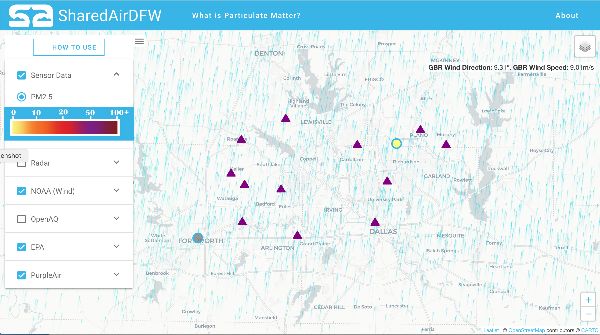
A screenshot of the SHAREDAIRDFW network map being assembled by UTD students and Downwinders at Risk. This map will soon be available at websites hosted by UTD, Dallas County and Downwinders, Only two of the over 100 new monitors are installed (dots) but more are on their way.
What is It?
The SHAREDAIRDFW community air quality monitoring network. 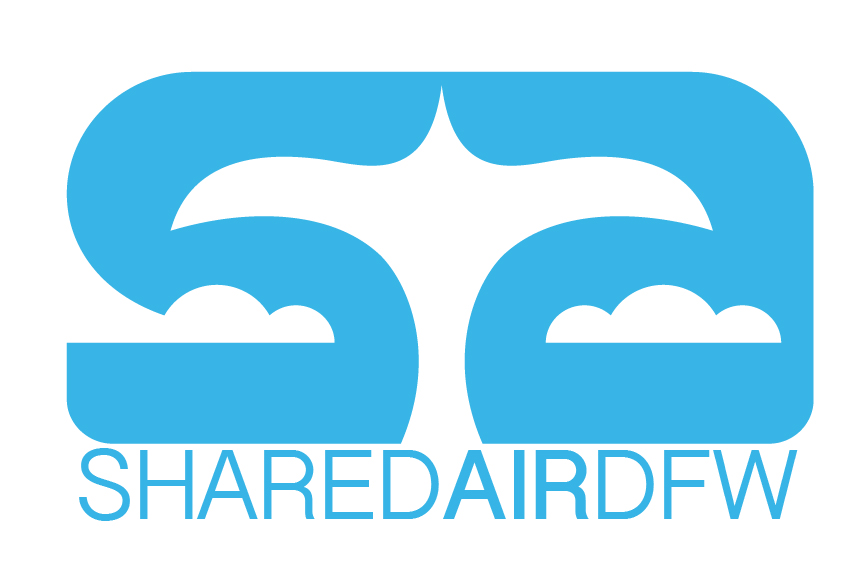 With its partners at UTD, Downwinders is building a new air monitoring network for DFW that will provide real time information from over 100 locations, including industrial hot spots in Joppa, West Dallas and Midlothian.
With its partners at UTD, Downwinders is building a new air monitoring network for DFW that will provide real time information from over 100 locations, including industrial hot spots in Joppa, West Dallas and Midlothian.
Why Do It?
Dallas County’s 2.7 million residents currently share only one EPA 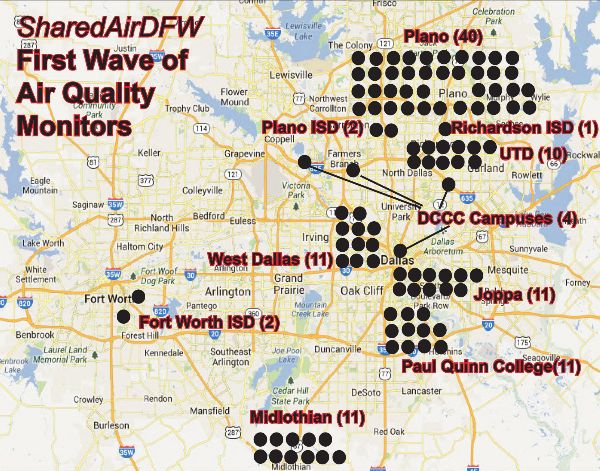 Particulate Matter air pollution monitor, north of downtown. Tarrant County has two and Denton County one. These monitors only reflect very local conditions and don’t reveal pollution levels in “frontline” neighborhoods where industry operates next to homes.
Particulate Matter air pollution monitor, north of downtown. Tarrant County has two and Denton County one. These monitors only reflect very local conditions and don’t reveal pollution levels in “frontline” neighborhoods where industry operates next to homes.
Making pollution burdens more equitable across racial and class lines requires identifying, measuring, and mapping those burdens: “You can’t fix what you don’t measure.” The SHAREDAIRDFW network is the first attempt to permanently map air pollution burdens across North Texas and make that information easily accessible to the public 24/7.Dallas County’s 2.7 million residents currently share only one EPA Particulate Matter air pollution monitor, north of downtown. Tarrant County has two and Denton County one. These monitors only reflect very local conditions and don’t reveal pollution levels in “frontline” neighborhoods where industry operates next to homes.
Making pollution burdens more equitable across racial and class lines requires identifying, measuring, and mapping those burdens: “You can’t fix what you don’t measure.” The SHAREDAIRDFW network is the first attempt to permanently map air pollution burdens across North Texas and make that information easily accessible to the public 24/7.
What’s the COVID Connection?
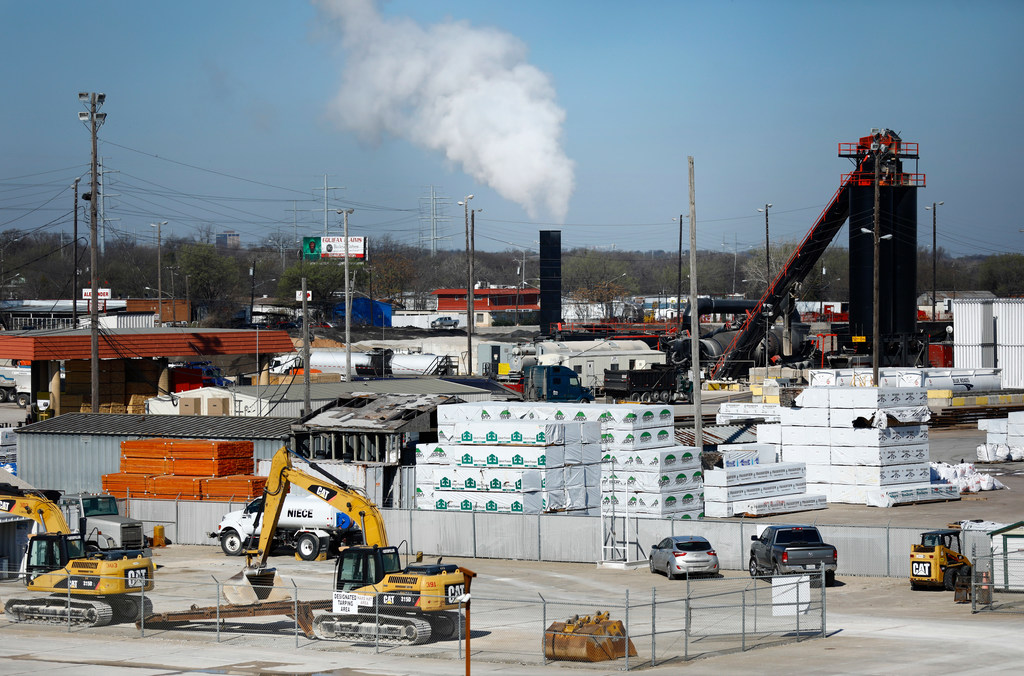
Research being done during the COVID pandemic concludes those living with the highest air pollution burdens are among the most vulnerable to being infected and dying from it. Specifically there seems to be a connection between a person’s exposure to Particulate Matter and Nitrogen Oxide air pollutants and the likelihood of contracting COVID. Past studies from the SARS epidemic also point to a strong link between exposure to air pollution and vulnerability to illness.By mapping where the heaviest air pollution burdens are, we can avoid adding to that burden and pursue policies targeting pollution decreases. We can begin to reverse the circumstances that makes the most pollution-impacted neighborhoods the most vulnerable to disease.
STATUS?
Via teleconferencing, UTD students are finishing up the digital map the Network 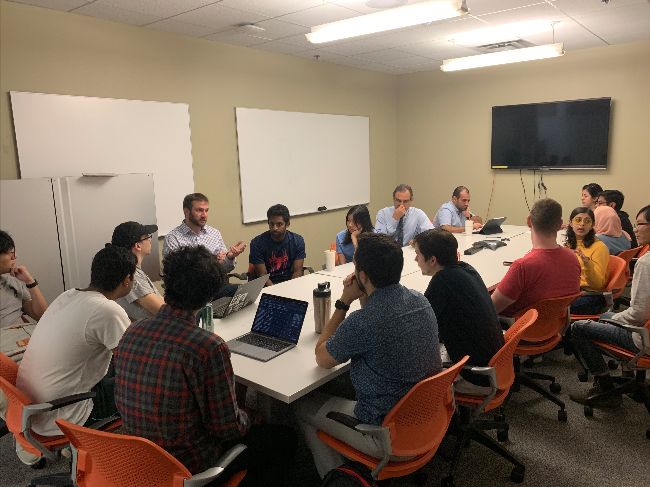 will use to display its real time air quality information. This map is meant to display not only the levels recorded by our own fleet of monitors, but easy access to the handful of EPA and Purple Air monitors in DFW as well.
will use to display its real time air quality information. This map is meant to display not only the levels recorded by our own fleet of monitors, but easy access to the handful of EPA and Purple Air monitors in DFW as well.
The map will be hosted on websites hosted by UTD, Dallas County and Downwinders.The first community monitors are slated for the former Freedman’s town of Joppa, where Downwinders bought a utility pole for the installation of the larger Mothership monitor. We’ve got a contract for Internet service and are now trying to tie down electrical power.
After a planned community meeting in March was canceled, we’re now gearing back up to find hosts for all ten “satellite” monitors. We hope to be able to begin operat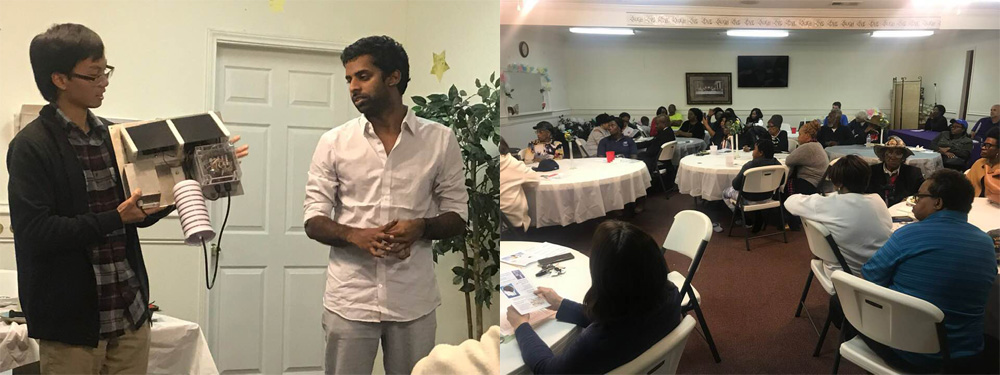 ion this summer.Once we’re up and running in Joppa, West Dallas is next and then Midlothian. In all Downwiwnders will be responsible for 33 of the over 100
ion this summer.Once we’re up and running in Joppa, West Dallas is next and then Midlothian. In all Downwiwnders will be responsible for 33 of the over 100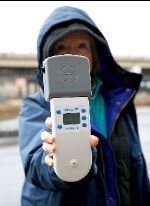 network monitors going up as part of the first wave installation.
network monitors going up as part of the first wave installation.
……MEANWHILE, Downwinders is using its portable monitors to record air quality in front line neighborhoods during the shelter-in-place periods so we’ll have a baseline for what cleaner air looks like.
Memo: Vote on Dallas Climate Plan Scheduled for May 27th…via Zoom?
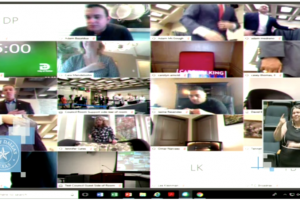 Disregarding calls to postpone a vote on its controversial Climate Plan until the Dallas City Council can resume traditional public participation in meetings, Council Environmental Chair Omar Narvaez has set a May 27th date for full council approval.
Disregarding calls to postpone a vote on its controversial Climate Plan until the Dallas City Council can resume traditional public participation in meetings, Council Environmental Chair Omar Narvaez has set a May 27th date for full council approval.
According to an April 9th memo Narvaez sent to the rest of the Council, the newest draft of the plan will be unveiled online on April 21st with a full briefing to the Environmental And Sustainability Committee scheduled on May 4th if that’s possible. If not, the full council will get a briefing on either May 6th or 20th.
While current local Shelter-in-Place orders expire at the end of April, most experts believe those should be extended through May and there’s no timeline for reinstating in-person public meetings of any local city councils or other governing bodies. If the City follows Narvaez’ schedule, it’s uncertain under what circumstances the Dallas Plan would be adopted, and how much public participation would be allowed.
That Dallas’ plan might be approved while by-passing the usual democratic niceties is just one more way it’s managed to elude real public engagement and transparency over the past two years. From beginning to end, the project has been a consultant and staff-led exercise with just enough of a thin veneer of “public participation” to reassure the unaware.
[pdf-embedder url=”https://www.downwindersatrisk.org/wp-content/uploads/2020/04/CECAP-memo_040910.pdf” title=”CECAP memo_040910″]
In the memo, Narvaez goes to great lengths to recap City Hall’s efforts at including “the public” in the plan. He cites the plan’s Stakeholder process, where staff hand-picked its own City Hall-friendly review committee. Not cited is the strange fact that there’s never been a list of individual stakeholder participants released and anyone wanting to know who was representing “the public” in the process had to submit an Texas Open Records Act request to City Hall to find out. Navarez also recounts the previous briefings his Committee has received from staff – but not the fact that no public participation was allowed in those briefings.
Neither does Narvaez mention that some of the Plan’s own official stakeholders are in open rebellion over its uninspiring results, including allies who were practically embedded with city staff for months. There are at least two separate on-going efforts by former stakeholders to try and strengthen the Plan before passage.
But the same divisions that have plagued Dallas environmental groups since the Plan’s announcement are dividing it at the end of the process as well. Representatives of larger mainstream groups like the Sierra Club and Public Citizen are pushing for quick adoption of the Plan, while Texas Campaign for the Environment, the local fledgling Sunrise Movement chapter, and others are seeking delay until citizens are allowed to come back into the Council Chambers and speak directly to their representatives – without the help of Zoom.
One recent development of the Plan that could be actually be relevant for ordinary residents is talk about restoring the Environmental Health Commission as a way to monitor the Climate Plan’s progress as well as serve as a new forum for residents’ concerns. Eliminated ten years ago just as secret gas drilling deals were being written by then City Manager Mary Suhm, the Commission had previously acted as the Council’s eyes and ears on all things related to public health and successfully advanced policy on a variety of fronts, including practical elimination of all waste incineration in Dallas.
Downwinder allies in The Southern Sector Rising Campaign for Environmental Justice called for restoration of the Environmental Health Commission last year at its March 20th news conference at City Hall and has been lobbying to bring it back ever since. Responding to a 2019 Dallas Green Alliance questionnaire, 10 of 15 current Council Members approved of the idea, so theoretically at least, it might be an easy sell.
If restoration of the Commission as previously fully empowered were to actually be included in a final Climate Plan package, at least something of practical real word use would have been purchased with the $500,000 + spent to date on the effort.
Our past coverage of the plan:
February 2019: “All Plan, No Action: Dallas City Hall’s Approach to Climate Change”
March 2019: “Dallas Climate Plan’s ‘Public Participation’ is Neither Very Public nor Participatory”
May 2019: “Dallas’ Climate Plan Rolls Out Public Engagement Plan. Public is MIA.”
November 2019: “The Only Thing Missing in Dallas’ Climate Plan “Focus on Equity” is…any measure of Equity”
February 2020: “How the Dallas Climate Plan Baits and Switches on Air Pollution”
March 2020: “Biggest Disappointment of the Dallas Climate Plan? Greens Giving Away Their Power For So Little in Return.“
How the Dallas Climate Plan Baits and Switches on Air Pollution

A little after 5 pm Monday February 3rd, the Office of Environmental Quality and Sustainability (OEQS) at Dallas City Hall released its draft recommendations for the city’s climate “action” plan. There are 93 “action items” including transportation, buildings, green spaces, water management, solid waste, and urban agriculture. Most are without imagination or timelines, meaning that even the most milk toast-like recommendations being made will have to be fought for tooth and nail to be done in a timely manner.
Like the department that generated them, the list of recommendations is effusive about stormwater management and tree-planting and silent on more challenging issues such as inequitable pollution burdens and the City’s own reliance on natural gas. It once again puts the spotlight on the lack of any environmental health expertise at Dallas City Hall in the decision-making process. When Dallas OEQS staff talk about the environment, what they really mean is “conservation” – a definition that’s been obsolete since at least the 1970’s.
There’s no better example of how this tunnel vision affects policy than OEQS staff invoking DFW’s chronically poor air quality (i.e. an environmental health problem) to sell the need for its Climate Plan…only to see the actual Plan ignore poor air quality as a serious health issue that could use some innovative thinking.
For over a year now, anytime you saw a Climate Plan presentation by Dallas OEQS staff, it always cited DFW’s smog problem as something that would only get worse as the climate crisis played out. “Everyone here is probably aware of DFW’s longtime air quality problems” or some approximate was the standard riff. And of course, everybody was. Heads nodded. Audience members were sometimes asked if they knew anyone with asthma and hands immediately shot up. That was the point. The selling point.
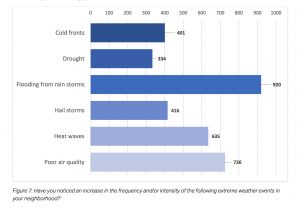 Because, until recently at least, the abstract nature of “the climate crisis” made it difficult to get people excited about the idea of a plan. Staff/Consultants needed a hook. And that hook was something everyone could relate to and probably already knew about: DFW’s three decades of violating the Clean Air Act. If you look at the results of the Ctiy’s online survey asking about frequency or intensity of climate change effects, “Poor Air Quality” was the second most cited concern. Among the City’s own handpicked crew of “stakeholders” advisors, it tied for first, along with buildings/energy use, getting more votes than parks, “nature-based approaches,” and renewable energy.
Because, until recently at least, the abstract nature of “the climate crisis” made it difficult to get people excited about the idea of a plan. Staff/Consultants needed a hook. And that hook was something everyone could relate to and probably already knew about: DFW’s three decades of violating the Clean Air Act. If you look at the results of the Ctiy’s online survey asking about frequency or intensity of climate change effects, “Poor Air Quality” was the second most cited concern. Among the City’s own handpicked crew of “stakeholders” advisors, it tied for first, along with buildings/energy use, getting more votes than parks, “nature-based approaches,” and renewable energy.
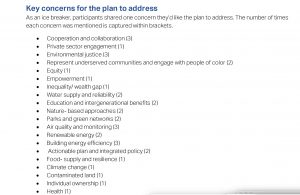
And yet, in those same City Staff presentations that highlighted poor air quality as a reason to have a Climate Plan, air quality itself was completely absent in the staff’s list of anticipated recommendations. It wasn’t that they just didn’t have much to say. They had nothing to say. There wasn’t even a category for air quality.
So Downwinders complained. Loudly. Staff and consultants sprang into action and came up with a category of recommendations officially called…“Other,” the theme of which was “air quality standards” and “public education.” Opportunities cited included “location-specific initiatives (e.g. downtown)” and “Programs targeted outdoor workers (e.g. Landscapers, construction workers).”
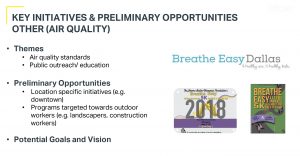 So sure, we have a chronic air pollution problem that warrants a $500,000 consultancy fee to construct a plan, but in that plan we’re only going to continue to inform people of that problem and maybe do some kind of vague thing relating to the poor souls who work outside (limit hours, hand-out free oxygen, help find new employment, or maybe free health check-ups? Doesn’t give a hint). By the way, only the public education part of that slide made it to last Monday. Construction workers and landscapers are still up a creek.
So sure, we have a chronic air pollution problem that warrants a $500,000 consultancy fee to construct a plan, but in that plan we’re only going to continue to inform people of that problem and maybe do some kind of vague thing relating to the poor souls who work outside (limit hours, hand-out free oxygen, help find new employment, or maybe free health check-ups? Doesn’t give a hint). By the way, only the public education part of that slide made it to last Monday. Construction workers and landscapers are still up a creek.
Along with those snippets of text on the “Other” slide were large color pictures of the “Breathe Easy” 5K run sponsored by The Jerome Alston Memorial Foundation in May…during Ozone Season. We’ll give the City staff credit. In terms of public education, there might not be a better way to personalize the seriousness of DFW’s air pollution problem than having North Texas smog cause an emergency asthma attack while you’re running in it. But liability could be an issue.
As late as the final round of public meetings last Fall, staff still didn’t have an “Air Quality” category but said they would have “something” when the plan was published.
Turns out “something” looks a lot like nothing.
Among the 93 “actions” listed in the Plan’s draft, the category of Solid Waste gets nine recommendations. Water Resources 15. Urban Ag 14. The brand new category of “Air Quality” has four – the fewest of any category in the plan. It’s practically stamping “Last-Minute Desperation” on the whole subject.
And tell us if any of these recommendations sound like anything you might have already heard about…
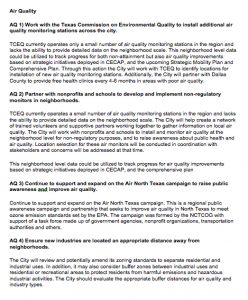
Let’s take them from the top.
The very first thing out of the gate, the lead-off, sexiest, out-of-the-box recommendation for improving air quality is…. somehow talk the State into adding more obsolete, state-run air monitors at some unspecified time in the future.
If you can, forget that the State environmental agency – the Texas Commission on Environmental Quality (TCEQ) – is a model for the Trump Administration. Forget that its official position is that smog is waaaaay overrated as a health threat. In other words, forget that this is akin to hiring Charlie Sheen to babysit your only child.
It’s not the baked-in, in-your-face cynicism of City staff knowing the state has every reason not to do this that’s so offensive. It’s the same cynicism applied to knowing full well what will happen even if the state says yes to the request: no real improvement in local information about air quality. Those state monitors are big, slow, and sparse. They run two hours or more behind real time. They’re hard to find online. They’re needlessly expensive and take up lots of real estate that has to be purchased. Their placement is decided by TCEQ and city staff, not the communities most in need of them. There is no stated OEQS goal for the number of monitors to acquire, or suggestions about where new monitors should be. No language in the recommendation about wanting real time monitoring or more modern equipment. It’s just an expansion of an already-obsolete system the state only runs because federal law requires them to (for now).
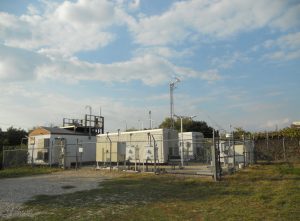
OEQS wants more of these lumbering and obsolete monitors from the state.
So let’s say the City talks the state into doubling the number of state PM 2.5 monitors in Dallas. Victory! The discussion will then be where to place the second slow, hard-to-find PM monitor for all of Dallas County’s 2.5 million residents.
Left unsaid in this recommendation is something we already know. For a year now Staff has tried to move that single Dallas County PM monitor located on Hinton Street north of Downtown to somewhere in Southern Dallas. Apparently the state has made that hard-to-impossible and so for the purposes of having something, anything, to recommend for this climate plan, staff recommends more monitors – knowing there’s a snowball chance in Hell of getting them. It’s the perfect bureaucratic out.
Most importantly the City remains a spectator to the reporting to its residents of how bad their air is. Its staff doesn’t have to make any environmental health judgments as they’re busy promoting tree planting. They leave that up to the people who couldn’t care less about how much pollution you’re breathing.
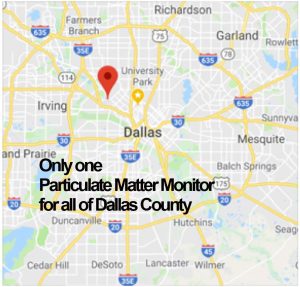
In the wake of recent Gulf Coast chemical plant accidents, the TCEQ is under heavy criticism for its lack of current air monitoring technology. The system it operates in DFW hasn’t changed in over 20 years. TCEQ won’t even put an air monitor in the only DFW “non-attainment” county that doesn’t have one – Wise – where smog levels have been predicted to be even higher than in DFW proper.
Recommending a modest expansion of circa-1999 technology is the opposite of a “best practices” answer for our gap in local air quality knowledge. The most alarming thing about this recommendation is that it got made at all.
The one-liner stapled at the end about offering free health screenings “with Dallas County” (who’s already in the business) in “areas with poor air quality” is incredibly condescending. Here’s the ultimate “settlement house” approach to a social ill – addressing the symptoms but not the cause. “Well, we can’t do much to enforce code or keep those batch plants out of your backyard, but by God we’ll be around every 6 months to keep track of your asthma until you die from it.”
How does OEQS staff know where those “areas with poor air quality” are now unless they’re out monitoring them? Which they clearly do not want to do. Given there’s only one official PM monitor for all of Dallas County, how are they defining “areas with bad air?” If they’re making educated guesses where those “areas” are based on other factors besides monitoring, why not name those factors and the “areas?” OEQS goes out of its way to avoid using the words “environmental justice” even as it makes recommendations based on the concept.
Recommendation #2 – let’s build our own “non-regulatory” air monitoring network sometime in the unspecified future with unspecified non-profits and community partner volunteers and put an unspecified number of monitors in unspecified places, for which we unspecified criteria. And these monitors “could be used to “to track progress for air quality improvements based on strategic initiatives deployed in CECAP, and the comprehensive plan.”
This is actually a great idea. It’s such a great idea that a specified alliance of local governments, non-profits, and community partners are already doing it in specified locations with specified monitors. Their effort is about to deploy over 100 locally-built air monitors that will increase PM 2.5 monitoring in Dallas County by 4000%. It’s called the SharedAirDFW Community Air Quality Monitoring Network and the City of Dallas officially walked out of it last year over a public participation requirement and a desire to refrain from being the source of bad news about bad air.
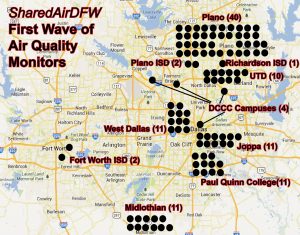
Dallas city staff is consistent in believing that telling you about air pollution is absolutely, positively necessary – they just want someone else to do it.
Having walked away from the SharedAirDFW network, OEQS set out to make one up of its own using the City Hall-friendly Nature Conservancy as its non-profit partner. The “Breath Easy” plan was to put 9-12 PM and smog monitors on the same number of DISD campuses, grow trees and implement anti-idling zones at those schools and see if asthma attacks/rates dropped in 24 months (2 growing cycles). Everyone seemed to agree how important a project this was and the city raised $500,000 or more to buy 12 very nice Aeroqual (Recommended by Downwinders since 2017!) air monitors. Everyone but the Dallas independent School District, who nixed the idea last summer. This detail somehow escaped the presentation staff gave to the City Council’s Quality of Life Committee on the Breath Easy project in September 2018.
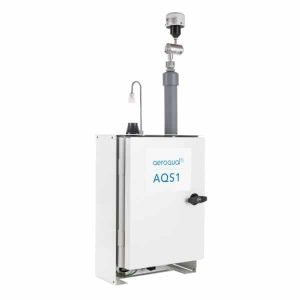
An Aeroqual stationary air monitor like the 12 Dallas owns…but isn’t using
So far the City of Dallas is 0 for 2 in making their own recommendation a reality when it had the chance. But wait! Remember those 12 monitors the City bought for the defunct Breathe Easy project? They’re just sitting somewhere. They’re already paid for but aren’t being used. OEQS could implement this recommendation of theirs on its own tomorrow if it wanted to by placing these 12 monitors in locations based on where the most industrial facilities are and where the most air pollution complaints come from. Overnight it could have its own fleet of “non-regulatory” monitors in the field, with all the benefits cited by staff.
But there’s no mention of those 12 monitors, or of the City Hall’s ability to accomplish this goal on its own, right now, without waiting. Because it doesn’t want to. It wants someone else to do it.
Recommendation #3 . It’s that forlorn public awareness recommendation showing up in the form of continued support for an ozone season air quality campaign run by a group that did its part to make smog an issue for years. There’s no harm to this but there’s also no help. This campaign will go on for as long as DFW is in violation of the Clean Air Act and doesn’t mention climate change.
Finally, there’s recommendation #4. Perhaps (but perhaps not) heavy industry that pollutes a lot shouldn’t be close to homes. This is coming straight-faced from a OEQS that’s approved the last four batch plants seeking permits to set-up shop in Joppa and the South Central Corridor…next to homes. Do as we recommend, not as we actually, you know, do.
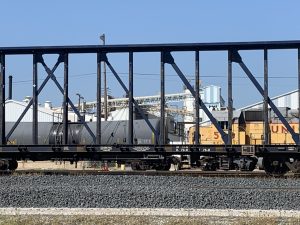
The TAMKO asphalt shingles plant and multiple diesel locomotives operate next to Austin’s asphalt batch plant…and residents in Joppa
When it says the City will review zoning, that’s not a special environmental health screening of sites. It’s just part of upcoming land use planning processes that will already be used to re-examine all zoning on a neighborhood-by-neighborhood level. They’re riding coat tails. The OEQS doesn’t make recommendations about suggested buffer zones, where those zones should be, or what criteria the city should use in pursuing buffer zones. And it doesn’t even say the City’s neighborhoods need any buffer zones between homes and industries at all, just that it may want to consider them at an unspecified time by an unspecified body for unspecified neighborhoods. Have we mentioned the staff at City Hall really really doesn’t like to deal with environmental health issues?
We get it. They had to have something or you’d be reading our criticism about the absence of ANY specific air quality recommendations, no matter how lame. And there are other items in other categories that will inevitably produce decreases in air pollution of all kinds – bus and vehicle fleet electrification being among the lowest-hanging fruit.
But City Hall’s cynical use of DFW’s air pollution problem to win support for a plan that ends up doing nothing about it directly makes these “Air Quality” recommendations particularly contemptuous.
What would more sincere “air quality” recommendations look like?
1. Acknowledging an historic imbalance in the air pollution burdens borne by Dallas neighborhoods and a commitment with a deadline to inventory the City’s air pollution threats by council district and zip code. You c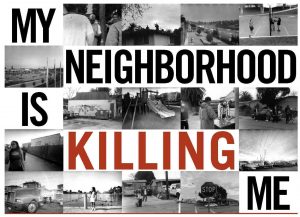 an’t fix what you don’t measure. Right now there’s no map of where concentrations of air pollution are in Dallas.
an’t fix what you don’t measure. Right now there’s no map of where concentrations of air pollution are in Dallas.
2. Acknowledging there’s no safe level of PM air pollution, i.e., no amount of exposure that isn’t capable of doing harm. Acknowledging People of Color are exposed to more, and higher levels of PM pollution than their white peers. These conclusions, supported by a multitude of good studies, including ones from EPA, are basic in prioritizing where to reduce air pollution in Dallas.
3. Recommendation to write an Environmental Equity Provision into City Code to discourage and prohibit siting new polluters in those zip codes hosting more permitted polluters than the citywide average, beginning in 2021.
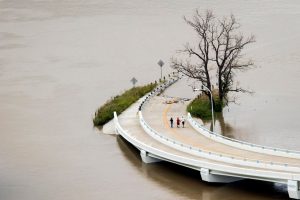 4. Recommendation to quit siting polluters in any floodplain beginning in 2021.
4. Recommendation to quit siting polluters in any floodplain beginning in 2021.
5. Recommend a 2025 deadline for the electrification of all railroad switch yard operations in Dallas.
6. Recommend 1500 foot buffer zones on either side of new major highways where homes, day care centers, and schools would be prohibited from locating. Applied to existing highways as uses within 1000 feet come up for new permits and zoning.

7. Recommend the immediate amortization and relocation of the GAF asphalt shingle factory in West Dallas and the TAMKO shingle factory in Joppa. These factories are among the City’s largest industrial polluters in Dallas, accounting for over 420 tons of air pollution in 2017 alone. They operate in the middle of dense urban residential areas populated primarily by People of Color. They need to be relocated elsewhere. Building new facilities will automatically trigger modern pollution controls requirements. They’ll be cleaner and doing business in a less harmful location.
8. Recommendation to rewrite city codes giving incentives for cleaner industries and more requirements for dirty ones.
9. Join UTD’s SharedAirDFW Community Air Monitoring Network – plug OEQS’ 12 unused monitors into the Network and begin to take responsibility for telling Dallas residents what their air quality actually is.
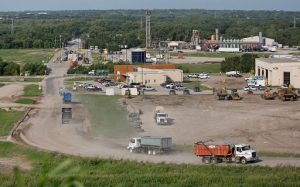 10. Acknowledge the conflict of interest the City has in producing and selling gas from its landfill recovery operation and commit to electrification of all city-owned vehicles by 2025. Dallas’ own city-run McCommas Bluff methane gas recovery facility is the fourth largest air polluter in Dallas, releasing over 160 tons of air pollution in 2017 alone. Recommend contracting only with electric vehicle fleets for additional services. Los Angeles recently committed to an all electric garbage truck fleet in five years, and Dallas could do the same – but it still wants to use its own landfill gas to power combustion vehicles.
10. Acknowledge the conflict of interest the City has in producing and selling gas from its landfill recovery operation and commit to electrification of all city-owned vehicles by 2025. Dallas’ own city-run McCommas Bluff methane gas recovery facility is the fourth largest air polluter in Dallas, releasing over 160 tons of air pollution in 2017 alone. Recommend contracting only with electric vehicle fleets for additional services. Los Angeles recently committed to an all electric garbage truck fleet in five years, and Dallas could do the same – but it still wants to use its own landfill gas to power combustion vehicles.
11. Implement stronger enforcement of the city air quality and nuisance ordinances, including hiring new staff and publicizing how to request an investigation.
12. Beginning in 2025 begin collecting municipal clean air mitigation fees of $50 a pound on permitted air pollution from major sources to incentivize pollution controls and pay for new staff. In 2017 such a fee would have collected over $1 million.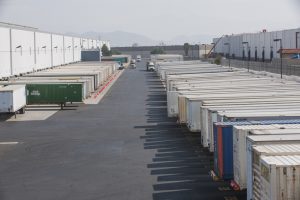
13. Implement no idling zones in all Dallas warehouse districts.
14. Recommend Low-Emission Zones in Downtown Dallas where combustion vehicles are banned or restricted, permanently or on a schedule. Consider expanding to other parts of Dallas such as Deep Ellum and Bishop Arts where congestion is already a problem.
15. Recommend PM pollution protection be designed into new bus shelters.
16. Recommend establishment of an Electric Bus Procurement Pool with DISD, DART, Trinity Metro, other area schools districts, and transit companies for cheaper purchases of electric buses.
17. Restoration of t he Dallas Environmental Health Commission.
he Dallas Environmental Health Commission.
18. Hiring a City of Dallas Environmental Health Scientist.
DFW does have a chronic bad air problem. The Climate Crisis will make it worse. It is a legitimate area of policy planning in any thoughtful, modern Climate Plan.
Just not this one.
First Regional Air Monitoring Network “Meet and Greet” in Joppa Draws Packed House and Volunteers
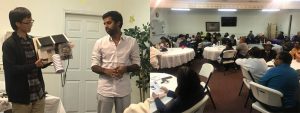
A new regional air quality network bringing 21st Century science to some of Dallas’ most polluted neighborhoods had it’s official coming out party on December 5th in the former Freedman’s community of Joppa.
A community meeting at New Zion Missionary Baptist Church sponsored by Downwinders at Risk in association with Paul Quinn College and Habitat for Humanity drew a standing room only crowd.
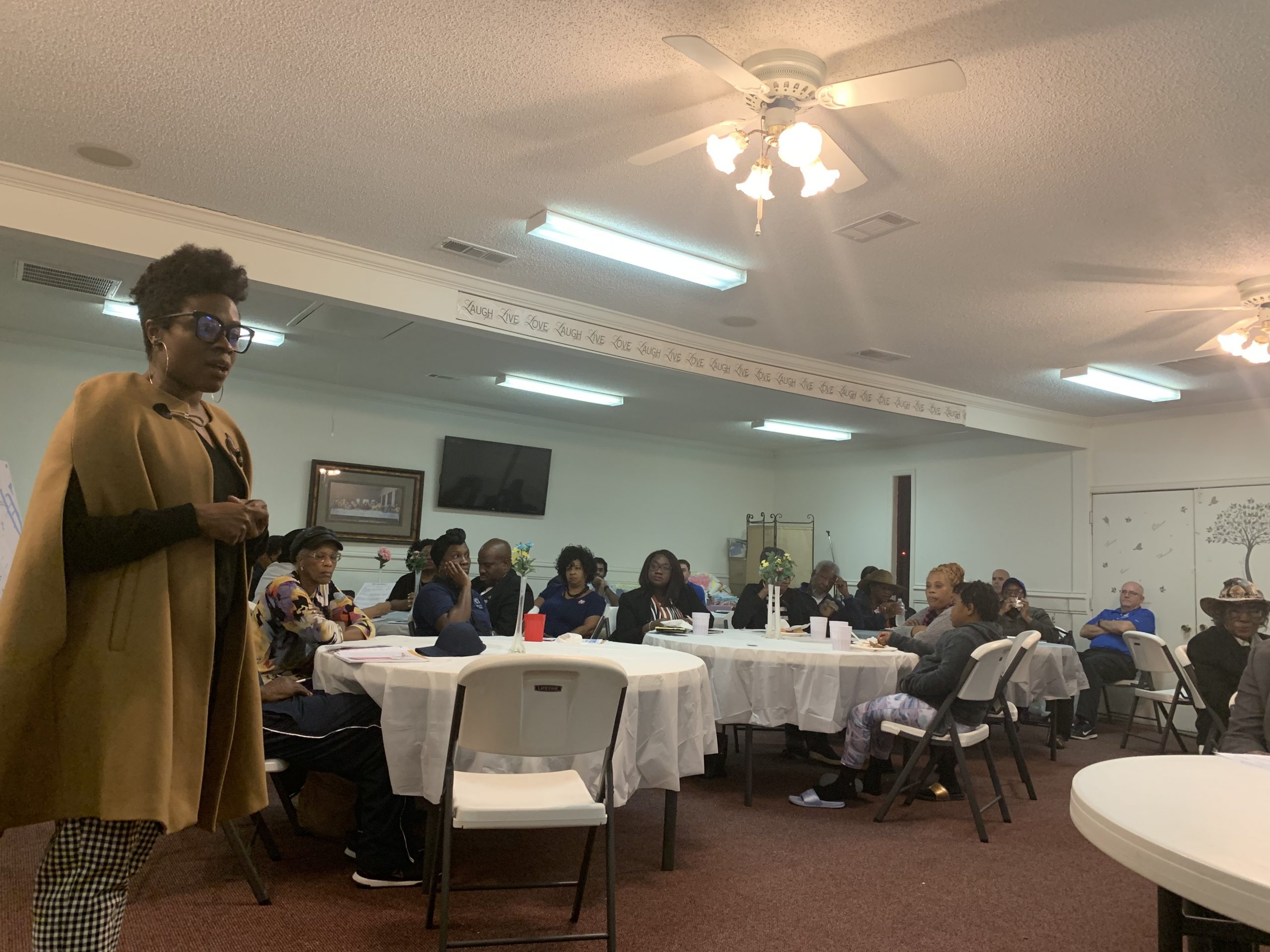 Food from Jason’s, door prizes, and the opportunity for a Parkland Hospital health screening made the meeting into a real community event.
Food from Jason’s, door prizes, and the opportunity for a Parkland Hospital health screening made the meeting into a real community event.
Residents got to see a monitor up close and hear a presentation by the University of Texas at Dallas graduate students building them for distribution over the next year. 11 of the monitors are due to be installed in Joppa, with another 11 installed in near-by Southern Dallas neighborhoods by Paul Quinn College. In total, over 100 are scheduled to be distributed from Plano to Fort Worth to Midlothian in the largest non-government network of its kind in Texas.
Joppa is surrounded by multiple sources of Particulate Matter air pollution, including a concrete batch plant, an asphalt batch plant, a Union Pacific railroad switch yard, Loop 12 and the Tamko asphalt shingle factory. Because of its compact size an relatively small population, it has the highest per capita air pollution burden in Dallas.
That’s why Downwinders chose to begin building its part of the network in Joppa. Thursday’s roll out was the first attempt to find hosts for the monitors among the neighborhood’s residents.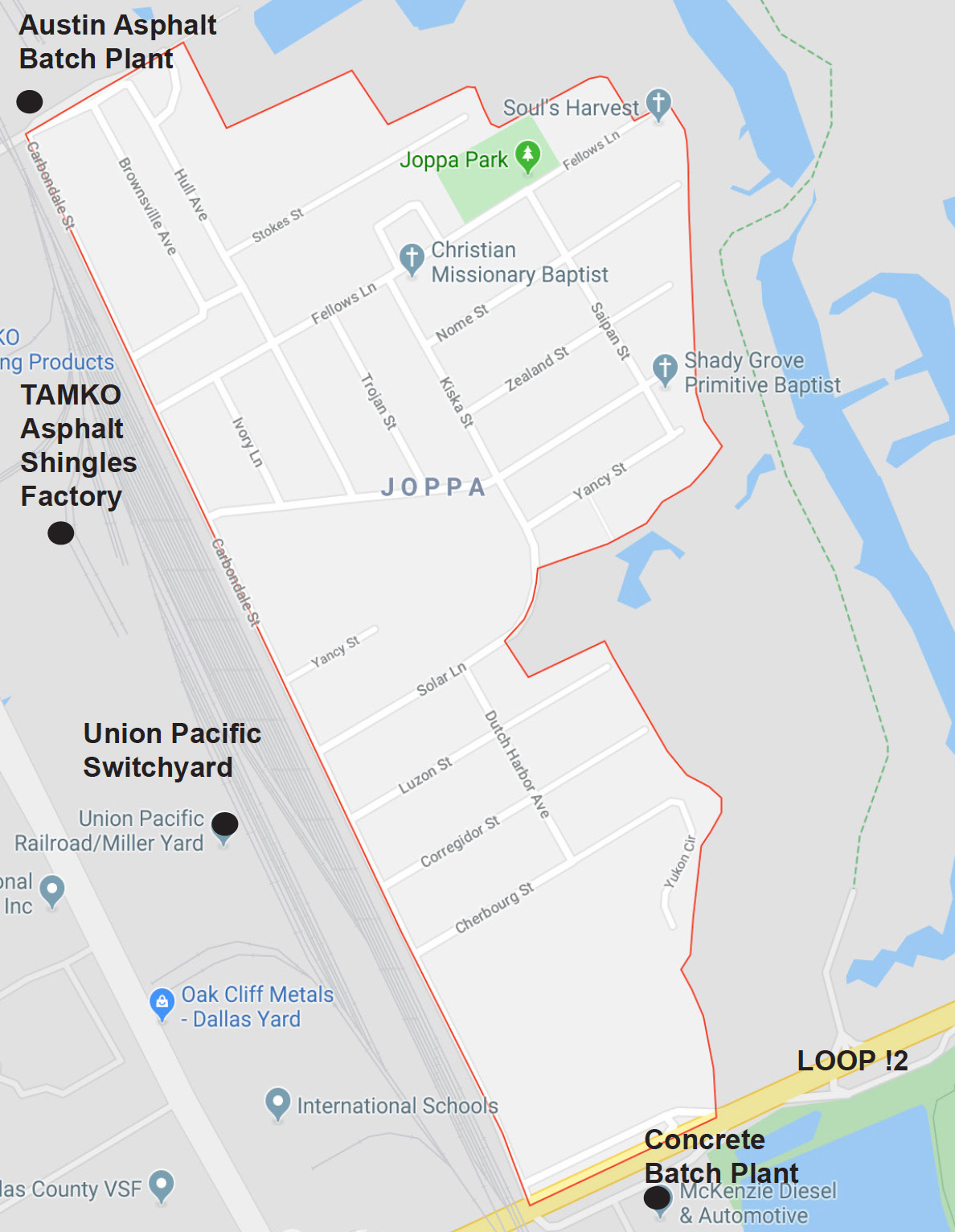
There were lots of questions and lots of enthusiasm. At least two Joppa residents didn’t need any more convincing and wanted to know how fast they could get a monitor at their house.
The answer is….soon. District 7 Council Member Adam Bazaldua is assisting the network in coordinating the electrical and internet connections we need for the “mothership” that carries the load for 10 smaller solar-powered and wireless sensors. A utility pole Downwinders bought from Oncor for that very purpose is only about 30 feet down the street road the New Zion Church where the meeting was taking place. All we need now are the connections.
Downwinders will be following up this meeting with door-to-door canvassing in Joppa and updates to everyone who signed-in. Meanwhile, we should be scheduling similar meetings in West Dallas and Midlothian after the first of the year.
After years of planning and preparation, we’re finally beginning to see the payoff of our vision. Thanks to all of our supporters for helping us achieve this first, but important milestone
“SharedAirDFW” is DFW’s New Regional Air Quality Monitoring Network
Monitors are being assembled.
Software is being written.
Community meetings are happening.
Downwinders is helping build the region’s
first 21st-Century Air Network
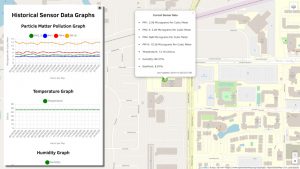
The first images from the mapping app UTD students are building for the new SharedAirDFW Air Quality Monitoring Network. Here data is being received by monitors already installed on the UTD campus. Residents will be able not only to see current conditions but levels over the last 24 hours or more.
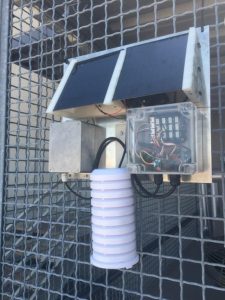
One of the over 100 new SharedAirDFW air quality monitors being built in the UTD laboratory that will be distributed throughout DFW, including Joppa, West Dallas, Southern Dallas, and Midlothian.
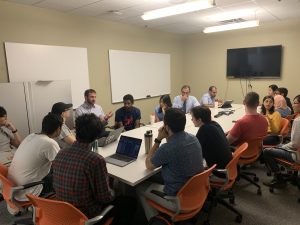
UTD students working with Downiwnders’ consultant Robert “the map” Mundinger on the SharedAirDFW mapping app software and interface.

By this time next year the Network plans on having over its first 100 air quality monitors distributed throughout DFW, including the “front line” communities of Joppa, West Dallas, Southern Dallas and Midlothian.
____________________________________
Real Time Air Quality Information is Coming to DFW
It’s taken years of work and a lot of patience but with any luck a new citizen-friendly regional air monitoring network will debut in 2020.
Under the working title of “SharedAirDFW” over 100 new custom-built air quality monitors are being distributed throughout the DFW region in the next 12 months that will be able to give residents real time information about the air they breathe for the first time. When it’s up and running, it’ll be the first network of its kind in Texas and one of the largest in the U.S.
Based out of the University of Texas at Dallas laboratories and fueled by its graduate students, as well as Downwinders’ grant monies, these monitors will offer real time information through a easily accessible app.
Right now a handful of official EPA monitors provide air quality readings up to one or two hours behind real time conditions. SharedAirDFW willl increase the number of calibrated air quality monitors in DFW by a factor of four while giving readings updated every few seconds.
Almost half of the new monitors are going to front line communities in the DFW area: 33 monitors purchased by Downwinders are going to Joppa, West Dallas, and Midlothian, while another 11 purchased by Paul Quinn College are slated for the Southern Dallas neighborhoods surrounding its campus.
Joppa residents will get a preview of the system at a December 5th community roll out involving UT researchers, Habitat for Humanity, Paul Quinn, and local elected officials. Community events in Midlothian and West Dallas will follow.
This is one of the most important projects Downwiders has helped birth in its 25 year history. We’ll be bringing you updates as we get closer to bringing the whole system online. Thanks for you support.
The Only Thing Missing in Dallas’ Climate Plan “Focus on Equity” is…any measure of Equity
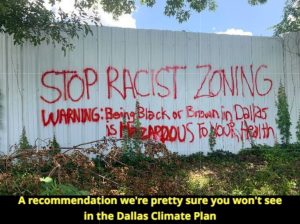
A staff presentation focusing on Dallas environmental equity lacks any metrics for comparing residential pollution burdens, or even for measuring the success of its own outreach effort.
So how does City Hall know what environmental “equity” looks like?
According to management guru Peter Drucker, “If you can’t measure it, you can’t improve it.”
Then what does it mean that a full year into a Dallas climate planning process heavily touted as reflecting the city’s emphasis on “equity” there’s still no map showing how pollution burdens are distributed across Big D? And what does it tell you when a presentation meant to advertise the inclusiveness of the City’s outreach effort for its climate plan doesn’t document participation by residents of color?
It tells you that despite all the rhetoric on the subject, Dallas City Hall isn’t serious about environmental justice yet.
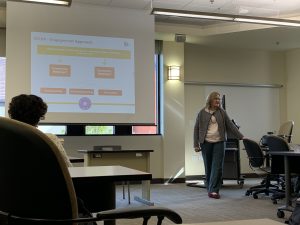
Office of Environmental Quality and Sustainability Susan Alvarez presents the City’s climate plan through “an equity lens.”
Exhibit A: “Dallas’ Climate Action Through an Equity Lens.” 



This was a presentation that Susan Alvarez, Assistant Director of the City of Dallas Office of Environmental Quality & Sustainability, gave as part of Eastfield College’s Sustainability as a Social Justice Practice: Developing Resilient Strategies held last Friday, November 8th.
Context is everything and so it’s important to note that the entire thrust of both the Conference and the City’s specific presentation was aimed squarely at how to respond to current environmental challenges in an equitable and just way. Here was a chance for Dallas OEQS city staff to display their embrace of equity as it relates to the climate plan it’s been paying a half-million dollars to consultants to construct. It was their very own EJ report card.
Equity and the Climate Plan:
And sure enough, there was no turning away from Dallas’ racist history in Alvarez’ presentation. Maps showing the City’s chronic segregation and poverty were included, as well as allusions to the Trinity River as the city’s dividing line between Haves and Have-Nots. Alvarez spoke about the current “Redlining Dallas” exhibit at City Hall that traces the City’s history of racism across 50 feet of photographs and stories.
In fact, just about every impact of the City’s official segregation was referenced, except for the one you’d expect.
There was not a single slide or sentence expended on the disproportional environmental impacts of 100 years or more of Dallas racism. No maps of where heavy industry zoning is allowed in the City. No maps of where most of the City’s largest polluters are located. No maps of what zip codes or Council Districts have the highest pollution per capita numbers. No references to past environmental justice struggles with the City like the West Dallas RSR fight, or gas drilling.
Watching the presentation you’d get the impression that racism infected every aspect of life for Dallas residents of color except for their exposure to pollution. But of course, we know that’s not true.
During this and other presentations on the climate plan-in-progress, staff go out of their way to point out that industry makes up “only 8% of emissions.” But if you’re interested in applying “equity” to this number the next slide should show the audience where that industry is distributed in Dallas – a map showing you where industrial polluters are allowed to set-up shop. A slide to show you the amounts of permitted pollution by Zip Code, or maybe actual 2017-18 emissions by Council District. But there is no next slide.
If there were, it would show that most of that industry is located in predominantly Black and Brown neighborhoods. Racist zoning is at the heart of not just banking, education, and employment inequities in Dallas. It also means the dirtiest industries have always been located in close proximity to people who were institutionally considered Second-Class citizens.
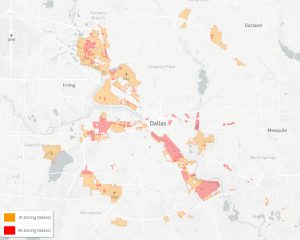
This one slide is already more information on Dallas environmental equity than you’ll find in the entire City staff presentation on equity and the climate plan
Disproportional exposure to industrial pollution by residents of color is not just AN equity issue. It’s THE single most important equity issue when you’re speaking about environmental justice in Dallas. The City’s Black and Brown residents are more likely to be exposed to harmful pollution than their white peers because the City’s own zoning designed it that way – but you’d never know it watching this presentation, on equity, at the social justice conference.
The “Redlining Dallas” exhibit that Alvarez cited thinks so. Along with other insidious effects of racism, it gives space to the RSR clean-up fight Luis Sepulveda and his West Dallas Coalition for Environmental Justice waged in the early 1990’s. But there was no mention of that fight or any other Dallas examples during the presentation on equity, at the social justice conference.
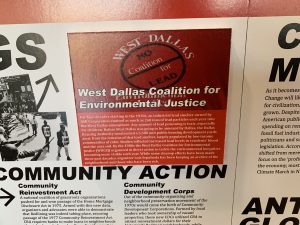
Staff referenced every other kind of red-lining on display at the City Hall exhibit – except the one most relevant to the topic.
Nor was there any mention of how much industry was located in the Trinity River floodplain, doing business in Black and Brown neighborhoods founded because the City wouldn’t allow these so-called “undesirables” to live anywhere else but side by side with “undesirable” industries. Alvarez made the point in the presentation that climate change means more flooding in general and more severe flooding. The next slide should show who and what is affected by that new flooding risk. A slide showing what percentage of heavy industry is located in the flood plain. A slide showing what the racial make-up and income levels are of those who’ll be more affected by increased flooding…and contamination. But there was no next slide, in the presentation on equity, at the social justice conference.
If you don’t have accurate maps of the inequities plaguing the status quo, how do you know when or if you’re ever getting rid of them? How do you judge success without a baseline?
PR, Process and Equity:“I don’t think it’s important to say I’ve got four black people in my stakeholders group.”
Alvarez lowered expectations for the presentation by saying it would only look at the question of equity in how it was applied to the City’s climate plan “community engagement.” No actual equity policy options from other plans were on the table, just how well the plan’s public relations campaign did.
Not very well, she admitted. In fact the initial meetings and publicity were so anemic that she said the professional PR folks at Earth X had a come-to-Jesus-meeting with staff about a reboot. So that’s tens of thousands of dollars wasted on PR consultants only to be usurped by better free advice from locals.
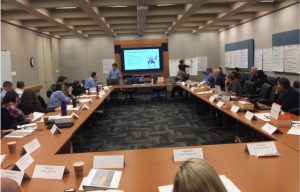
A meeting of the Dallas climate plan advisory group.
In her recounting of the climate plan’s PR rollout and planning process Alvarez gave an overview of the mechanics. “X” number of meetings attracted “X” numbers of people. The City’s survey got “X” number of responses. An “X” number of people serve on an advisory stakeholders group.
Considering the very specific circumstances of the presentation, the next slide should have been how the results of those attending meetings, or completing a surveys, or advisory committee memberships reflect Dallas’ population as a whole. How do we stack up to who we’re representing? According to the Statistical Atlas Dallas is approximately 25% Black, 41% Hispanic , 30% White and 3% Asian. So the next slide should compare what percentage of those attending climate plan meetings, or completing surveys, or becoming advisory committee members were Dallas residents of color vs the city demographics.
But there was no next slide about how inclusive the City’s climate plan community outreach or advisory process has been in the presentation on equity, at the social justice conference.
In response to a question about the lack of such information Alvarez said it was irrelevant to the topic at hand. “I don’t think it’s important to say I’ve got four black people in my stakeholders group.”
Since the advisory group membership is only listed online by organizational affiliation it’s impossible for anyone outside the meetings to know what the ethnic or gender make-up of it is. There are 39 separate entities listed. 25% of that number would be nine to ten black people.
In elaborating, Alvarez challenged the idea that mapping Dallas’ racial or ethnic disparities in pollution 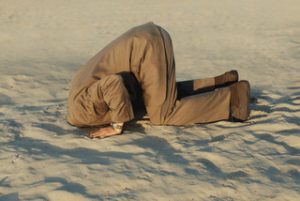 burdens was necessary to understanding “Dallas’ Climate Action Through an Equity Lens.” She more or less stated it didn’t matter. (the presentation was recorded by Eastfield College and Downwinders has asked for access to it in order to quote Alvarez accurately).
burdens was necessary to understanding “Dallas’ Climate Action Through an Equity Lens.” She more or less stated it didn’t matter. (the presentation was recorded by Eastfield College and Downwinders has asked for access to it in order to quote Alvarez accurately).
Nothing could better summarize the kind of Catch-22 “don’t confuse me with the facts” approach to “equity” the City staff has taken in regards to environmental racism than the belief that actual data about Dallas environmental racism is of no use to the study or remedying of Dallas’ environmental racism.
And nothing makes a better case for the need to pass environmental justice reforms the Southern Sector Rising Campaign is advocating at Dallas City Hall, including an environmental justice provision in Dallas’ economic development policy, restoration of the Environmental Health Commission, and creation of a Joppa Environmental Preservation District. If residents want environmental equity considered in city policy they’re going to have to enlist their City Council members, do it themselves, and enact reforms like these.
The same is true as City Hall ramps up to take on citywide land-use planning in its “forwardDallas!” process early next year. When staff recently released the City’s “equity indicators” report, there was an indicator for everything but the environment. It only reinforced the idea that the environment, and environmental justice, are still after-thoughts in Dallas city government. Residents will have to arm themselves with the information the City staff can’t or won’t provide. They should start with the recent Legal Aid report “In Plain Sight” that demonstrates deep neglect for code and zoning regulations in Southern Dallas.
And it also goes for the climate plan. Southern Sector Rising’s first recommendation for the city’s climate plan last May was “Remove industrial hazards from the flood plain.” On the other hand, the idea of land use reforms in the floodplain hasn’t appeared in any official literature or presentation associated with the city’s climate plan.
Grist recently published an article about the Providence Rhode Island climate planning process that looks to be the exact opposite of the model Dallas has adopted. But that city benefited from having an environmental justice infrastructure already in place when the climate crisis assignment arrived. Where’s the home for Environmental Justice in Dallas City Hall? Right now, it’s with staff that doesn’t think metrics about equity are important, in its presentation on equity, at the social justice conference.
